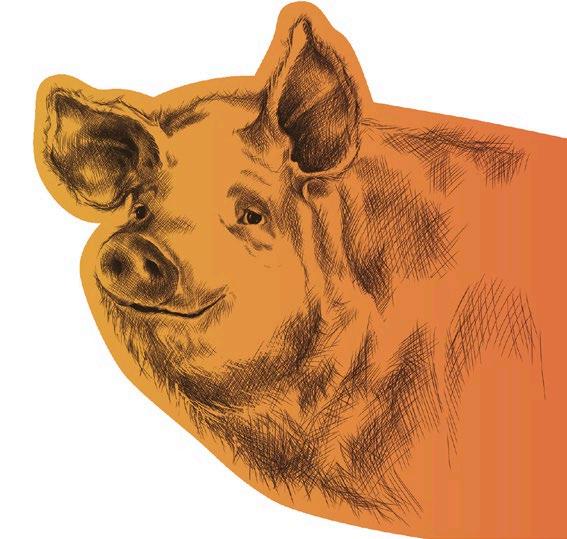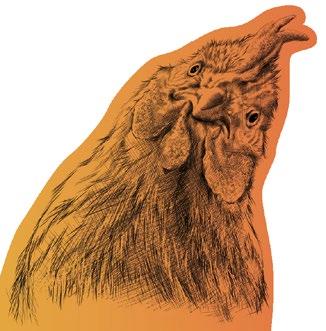




Going one step beyond in animal nutrition means ceaseless research and development. Going one step beyond means anticipating developments in the livestock industry and offering the highest quality products and services. Going one step beyond means total commitment to overcoming all our customers’ challenges.
In this new volume of nutriNews International, we bring together some of the most pressing topics and innovative solutions shaping the future of animal nutrition. Climate change continues to challenge agricultural systems worldwide, and one of its silent consequences is the increased risk of mycotoxin contamination.
In this issue, we address mycotoxins as the “invisible enemies” of animal production, explore advanced strategies to combat them, and present the updated 2025 anti-mycotoxin and others reference table—an essential tool for nutritionists and producers alike.
Looking toward sustainability, we highlight the role of black soldier fly larvae as a promising ingredient to build a circular and resilient future in feed production. In swine nutrition, the focus turns to the implications of using oxidized fats and their impact on animal performance, while also revisiting phosphorus metabolism as a key element in both efficiency and environmental stewardship.
In poultry, we delve into the importance of low-protein diets, a strategy that balances performance with sustainability by reducing nitrogen emissions. Complementing these technical perspectives, we also examine the role of vitamin E and polyphenols as powerful antioxidants, supporting animal health and resilience in increasingly demanding production systems.
This edition covers the broad spectrum of animal nutrition, with dedicated articles for general nutrition, swine, poultry, and cattle. Each section provides practical insights and scientific updates tailored to the specific needs of every production system, making this issue a comprehensive reference for professionals across the industry.
This issue is filled with knowledge, innovation, and practical insights designed to inspire and support professionals across the feed and livestock industries. We invite you to read the full magazine, confident that you will find it both enriching and enjoyable.

EDITOR COMMUNICATION GROUP AGRINEWS LLC
ADVERTISING
Luis Carrasco +(34) 605 09 05 13 lc@agrinews.es
Simone Dias +(55) 11 9 85852436 nutribr@grupoagrinews.com
SALES DEPARTMENT
Gustavo Lander +(34) 664 66 06 05 int@grupoagrinews.com
Ivan Martos +(34) 664 66 06 02 im@grupoagrinews.com
CUSTOMER SUPPORT
Mercé Soler
EDITORIAL STAFF
Álvaro José Guzman
TECHNICAL DIRECTION Dr. Edgar Oviedo (poultry)
Enjoy the read!
info@grupoagrinews.com nutrinews.com grupoagrinews.com
Subscription price 125$
nutriNews International
Legal Deposit B15281-2024
Images: Noun Project / Freepik/Dreamstime
The growing threat of climate change on contamination by mycotoxins in feed for animals

Rui A. Gonçalves PhD in Aquaculture, MBA in Agribusiness
Invisible enemies in the feeder: How mycotoxins undermine livestock productivity - and what we can do about it
Vitamin e and polyphenols: Complementary compounds but not substitutes

Dr. Edgar Oviedo-Rondon Prestage Department of Poultry Science, North Carolina State University, Raleigh, NC., USA
Building the future of sustainable farming: Insights into the black soldier fly industry

Tony Marjanen
Head of Sales in Manna Insect and Digital Nomad Entrepreneur
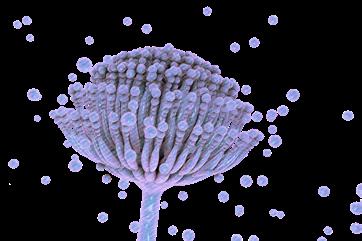
Navigating the maze of mycotoxin with myco’kingdom
54
The use of oxidized fats in pig nutrition: Production line and finished product Part 3/3



Gerardo Ordaz Ochoa, María Alejandra Pérez Alvarado, Luis Humberto López Hernández
National Research Center for Physiology and Animal Improvement, INIFAP, Mexico
64 A day in the life of phosphorus in pigs Part 2


Alberto Morillo Alujas1 & Rafael Duran Giménez-Rico2
1Doctor of Veterinary Medicine and Consultant at Tests and Trials, S.L.U.
2Regional Technical Manager, Danisco Animal Nutrition (IFF).
76 The importance of low-protein diets in poultry


M. Naeem and A. Fatima
Department of Poultry Science, Auburn University, USA
90
Creep feeding for “Anything but ordinary” performance Arm & Hammer Technical Team
Biozyme Technical Team
94
Abstract: Effect of nuxasan 500tm on performance and intestinal health in broilers challenged with Eimeria spp.
Nuproxa Technical Team
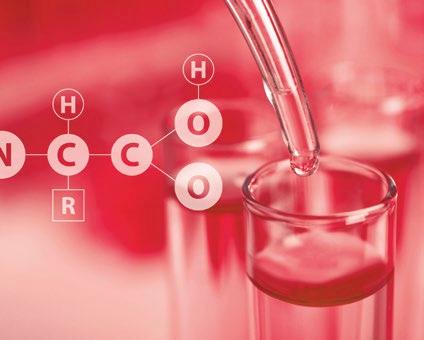

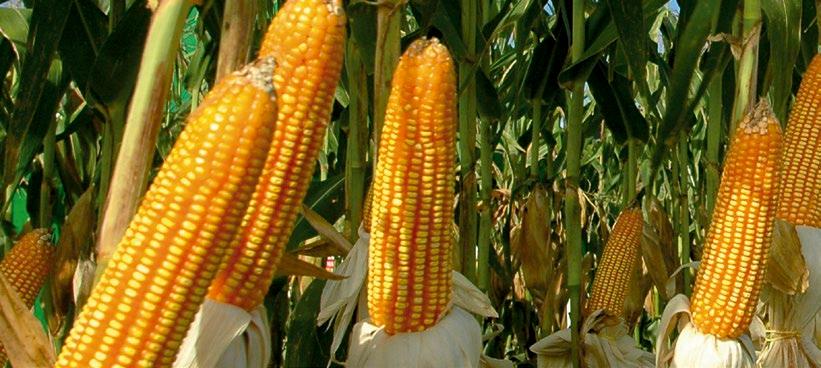
Rui A. Gonçalves PhD in Aquaculture, MBA in Agribusiness

Today's world was shaped by the agricultural revolution.
Don't get me wrong: I'm not referring to the Third Agricultural Revolution (1930s to 1960s), but much further back, to the Fertile Crescent some 10,000 years ago, the First Agricultural Revolution.

The domestication and selection of crops occurred in specific regions, not by mere coincidence, but as a direct consequence of favorable climatic conditions. The availability of species suitable for domestication, combined with stable climate patterns, set the stage for the emergence of sedentary societies.
Fast forward to today: global agriculture remains deeply influenced by that early selection. Modern agricultural systems, although more technologically advanced, are still dominated by a limited group of those founding species.
Interestingly, climate remains a decisive force, now not to enable crop domestication, but to redefine what and where we can grow, repeating the same climate-driven dynamics that catalyzed the birth of agriculture millennia ago.
Globally, agricultural production is dominated by a relatively small group of commodities, which account for the vast majority of both harvested volume and economic value.
The top ten crops—sugarcane, corn, rice, wheat, soybeans, oil palm fruit, barley, cassava, rapeseed, and tomatoes—collectively account for nearly 83% of global agricultural production by weight and approximately 70% of total crop value.
While crops such as sugarcane and corn lead in terms of volume due to their widespread use for food, feed, and bioenergy, highervalue crops such as tomatoes and rapeseed contribute disproportionately to total market value despite their lower tonnage.
Among these, soybeans stand out for their critical importance in animal nutrition. Although soybeans account for around 6% of global agricultural production by weight, they contribute approximately 10% of the total value of crops, reflecting their high market price and strong demand.
It is important to note that more than 75% of global soybean production is processed into soybean meal, and approximately 97% of this is used for animal feed.

This positions soybeans as the main source of protein in feed formulations for monogastric animals and increasingly for aquaculture. Its fundamental role in supporting animal food production underscores its strategic economic relevance within global agricultural systems.

Based on the dominance of a few global commodities in agriculture, the animal feed industry is also structured around a core set of raw materials, with production and trade flows shaped by both biophysical constraints and economic imperatives.
The main feed ingredient used in feed production—corn, soybeans, wheat, barley, and increasingly oilseed meals (rapeseed, sunflower, cotton)—come mainly from temperate and subtropical regions.
These crops are highly dependent on favorable agroecological conditions, large-scale mechanized farming systems, and well-developed postharvest infrastructure. As such, their production is heavily concentrated in a limited number of countries (FAO, 2023a; USDA, 2024).
For corn, the United States, China, and Brazil together account for more than 60% of global production. However, the dynamics vary significantly between these countries.
The United States remains the leading exporter, supplying more than 30% of internationally traded corn, while China—although the second largest producer—has become a net importer due to increased domestic demand, especially from its expanding pork and poultry sectors.
India, in contrast, plays a minor role in global corn exports but is a critical supplier in the South Asian region. Southeast Asian countries— due to their tropical climates and high rainfall, coupled with limited land availability—produce very little corn domestically and are therefore heavily dependent on imports, especially for compound feed manufacturing in Vietnam, Thailand, Indonesia, and the Philippines (van Hal et al., 2020), (OECD-FAO, 2023).

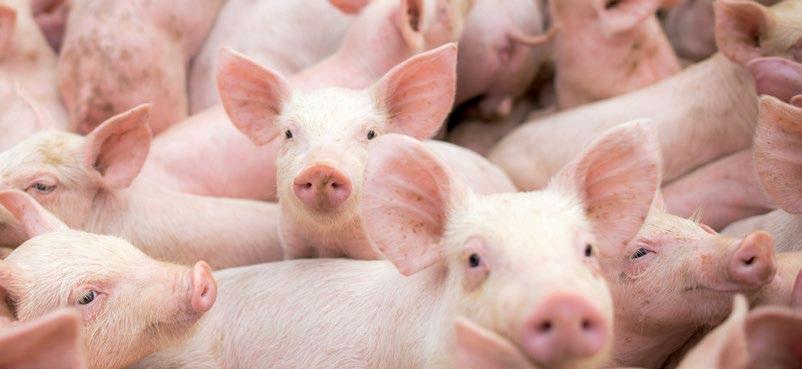


Soybeans follow a similarly concentrated pattern. The United States, Brazil, and Argentina dominate global production, collectively accounting for more than 80% of production. However, unlike corn, soybeans are processed before use: more than 85% of soybeans are crushed to obtain flour and oil.
Soybean meal is then marketed either directly or as an ingredient in compound feed (OECD-FAO, 2023). China, although once a major soybean producer, now imports more than 60% of the soybeans traded worldwide, mostly from Brazil and the United States, to feed its huge livestock and aquaculture sectors (USDA, 2024).
India, although one of the top ten producers, consumes most of its soybeans domestically, with some exports to neighboring and Southeast Asian markets. Once again, Southeast Asia is almost entirely dependent on imports—especially soybean meal—as the region's climate is not suitable for soybean cultivation (Rabobank, 2022).
Wheat and barley, although traditionally food crops, are also used in feed formulations when available and profitable. Russia, the EU, Canada, and Australia dominate the export landscape, with China and Southeast Asia as key destinations (IGC, 2023).
India remains a net consumer of wheat and an opportunistic exporter. In the case of barley, trade flows are smaller but strategic: Australia and the EU export largely to East Asia and Southeast Asia for use in animal feed and aquaculture, especially where nonGMO feed is preferred (USDA, 2024).
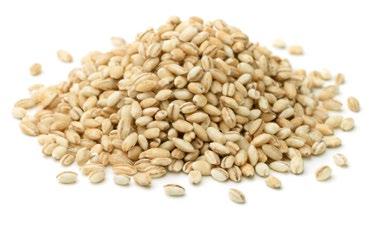
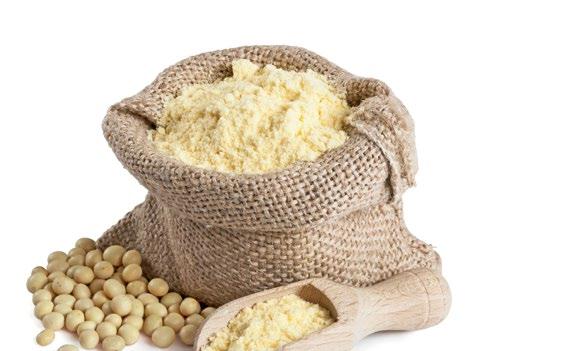
These patterns reveal a fundamental asymmetry: high-volume feed commodity production is geographically limited to temperate and subtropical regions, while the fastest-growing demand is in developing tropical and subtropical economies— especially China, India, and Southeast Asia—where climate constraints hamper large-scale agriculture.
This dependence places countries such as those in Southeast Asia in a structurally import-dependent position, making them vulnerable to global market volatility, supply chain disruptions, and geopolitical trade tensions (OECD-FAO, 2023; Rabobank, 2022).

It also intensifies the urgency of finding alternative sources of feed— locally available, nutritionally viable, and economically competitive—to ensure food sovereignty and support the sustainable growth of animal protein production in these regions (Tacon et al., 2011; Troell et al., 2014).

According to King et al. (2020), countries such as Russia and Canada are projected to benefit from increased agricultural suitability. Vast areas in their northern territories, previously limited by cold climates and short growing seasons, could become viable for growing staple crops such as wheat, corn, and soybeans.
It is important to note that Russia could gain between 31 and 45 million hectares of climatically suitable agricultural land, while Canada could gain up to 25 million hectares. To put this into perspective, the entire United Kingdom covers approximately 24 million hectares. Thus, Russia could acquire an area of arable land almost twice the size of the United Kingdom, and Canada an area rivaling or exceeding that of the United Kingdom. Climate change is not only reshaping demand for feed commodities, but is also expected to alter the geographical balance of global agricultural production.
Emerging evidence suggests that as temperatures, precipitation patterns, and the length of growing seasons change, some regions currently dominant in production may face significant challenges in maintaining yields, while others will become increasingly favorable for large-scale agriculture.
These changes, if combined with infrastructure investments and policy alignment, could position both countries as future agricultural superpowers— especially in the feed grain sector (King et al., 2020).
Conversely, some of the current leaders in feed crop production—such as the United States, China, and India—could experience reductions in their suitability, particularly in key growing regions vulnerable to extreme heat, drought, and water scarcity (Iizumi & Ramankutty, 2016; Liu et al., 2020).
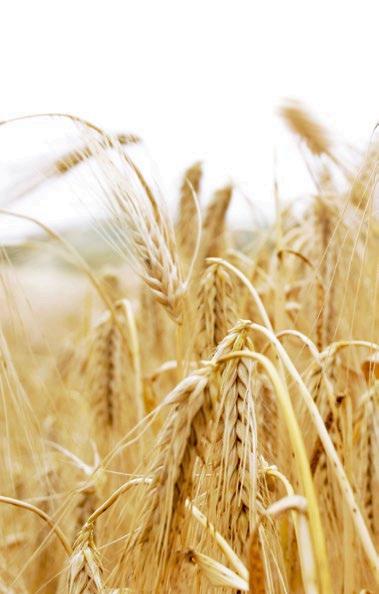

In the United States, sustained crop yields in the Midwestern “Corn Belt” could be compromised by increased heat stress and changes in precipitation patterns.

In China and India, where food security remains a national priority, rising temperatures are expected to reduce yields of key crops such as corn and wheat, especially in high-emission scenarios (Tigchelaar et al., 2018; Zhao et al., 2017).
In addition, in Southeast Asia, the tropical climate imposes inherent constraints on the expansion of large-scale grain production, while amplifying risks related to post-harvest deterioration and pest pressure (Magan et al., 2011).
This projected redistribution of global agricultural potential has implications that go beyond geopolitics and economics. It also directly intersects with feed safety, especially in the context of mycotoxin contamination.
Mycotoxins, secondary metabolites produced by certain fungi (mainly of the genera Aspergillus, Fusarium, and Penicillium), are a growing concern for food and feed safety in an increasingly warmer world.
The occurrence, type, and severity of mycotoxin contamination are closely related to environmentalconditions— particularly temperature and humidity—during the production, harvest, transport, and storage stages ( Battilani et al., 2016; Medina et al., 2014).

As climates change, so will fungal ecology and the risks associated with mycotoxin proliferation, especially in regions already burdened by poor infrastructure or in countries just beginning large-scale production with limited mitigation capacity.
In this evolving context, understanding how climate change influences both the geography of agricultural production and the dynamics of mycotoxin risk becomes essential
References available in the web version of the article at nutrinews.com
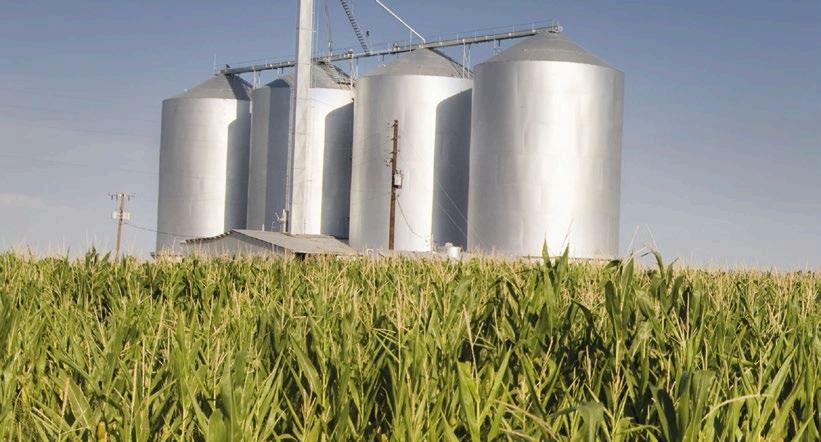
nutriNews International technical team

Mycotoxins are secondary metabolites produced by fungi such as Aspergillus, Fusarium, and Penicillium. Their occurrence in feed crops is a pervasive global challenge that undermines livestock health, reduces productivity, and generates significant economic losses.
Contamination can occur at the field level (pre-harvest) or during storage (post-harvest), and despite rigorous quality control, complete elimination is virtually impossible.
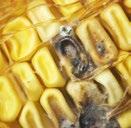
The Food and Agriculture Organization (FAO) estimates that up to 25% of global crops are contaminated with mycotoxins annually, although more recent surveys suggest that incidence may be far higher, particularly in tropical and subtropical regions.
In intensive production systems for poultry, swine, and cattle, the ingestion of contaminated feed translates into impaired performance, reduced feed efficiency, reproductive losses, immunosuppression, and even mortality in severe cases.

Among the numerous strategies to mitigate their impact, the inclusion of mycotoxin binders in feed has proven to be one of the most practical and effective. These additives, also referred to as toxin adsorbents or sequestering agents, work by reducing the bioavailability of toxins within the gastrointestinal tract, limiting their absorption and systemic effects.
This article reviews the main effects of mycotoxins in poultry, swine, and cattle, and explores the different categories of toxin binders available, their mechanisms of action, and their advantages in modern animal production.
Poultry species, particularly broilers
Produced mainly by Aspergillus flavus and A. parasiticus, aflatoxins are hepatotoxic. In poultry, they cause reduced weight gain, poor feed conversion, liver lesions, decreased egg production, and increased susceptibility to diseases such as coccidiosis or bacterial infections. Impairs kidney function and reduces growth. Its immunosuppressive effects exacerbate susceptibility to viral and bacterial diseases.
DON (vomitoxin) leads to reduced feed intake, poor growth, and damage to the intestinal mucosa. T-2 toxin is highly cytotoxic, causing oral lesions, reduced hatchability, and immune dysfunction. Fumonisins disrupt sphingolipid metabolism, leading to pulmonary edema and impaired performance.

The cumulative impact is significant: lower weight gain, higher feed conversion ratios, increased medication costs, and higher mortality. In breeders, reduced egg quality and fertility losses translate into downstream production inefficiencies.

Swine are considered the most sensitive livestock species to mycotoxins, particularly to trichothecenes such as DON and T-2 toxin. Because pigs consume large quantities of grain-based feeds, their exposure is consistent and often multi-mycotoxin in nature.
Deoxynivalenol (DON)
Known as vomitoxin, DON causes reduced feed intake, vomiting at high doses, and damage to the intestinal barrier. This results in reduced growth rates and impaired nutrient utilization.
Zearalenone (ZEN)
An estrogenic mycotoxin that disrupts reproductive function. In gilts and sows, it leads to vulvar swelling, irregular estrous cycles, abortions, and reduced litter size. In boars, ZEN can lower fertility by affecting sperm quality.
Cause liver damage, immunosuppression, and reduced growth.
Fumonisins
Induce pulmonary edema syndrome and interfere with immune responses.
The economic impact in swine herds is profound: slower growth, poor feed efficiency, reproductive failure, increased veterinary interventions, and carcass downgrades. Chronic exposure, even at subclinical levels, significantly undermines herd productivity.
Ruminants are generally considered more tolerant to mycotoxins because of the detoxifying capacity of the rumen microbiota.
However, this protection is not absolute, and dairy cows, beef cattle, and calves are all susceptible to various degrees, especially under conditions of high mycotoxin load or ruminal acidosis (which reduces microbial detoxification capacity).
Particularly concerning in dairy cows, as aflatoxin B1 consumed in feed can be metabolized to aflatoxin M1 and excreted in milk. This poses not only productivity losses but also public health concerns.
Impacts reproductive performance, causing irregular estrous cycles, reduced conception rates, and abortions. Cause reduced dry matter intake, lower milk yield, and immunosuppression.
Fumonisins and DON
Lead to digestive disorders, reduced feed intake, and, in calves, impaired growth and immune function.


The economic consequences for the dairy industry are substantial, ranging from decreased milk production and reproductive losses to potential milk rejection due to aflatoxin M1 contamination. For beef cattle, growth performance and carcass quality are at stake.
Given the ubiquity of mycotoxins and the impossibility of completely eliminating them from feed, the use of toxin binders represents a cornerstone strategy in feed formulation. These additives function by reducing the bioavailability of toxins in the gastrointestinal tract, either by binding them irreversibly or by modifying their structure.
The advantages of using mycotoxin binders include:
Reduced toxin absorption: By adsorbing toxins in the gut, binders prevent systemic distribution and organ damage.
Improved animal performance: Reduced impact on growth, feed efficiency, and reproduction.
Enhanced immunity: By mitigating immunosuppressive effects, animals maintain better health and vaccine responsiveness.
Food safety benefits: Particularly in dairy, reducing aflatoxin M1 contamination in milk.
Economic resilience: Lower mortality, fewer veterinary interventions, and improved overall productivity.


Not all binders are created equal, and their efficacy varies according to the type of mycotoxin, inclusion rates, and animal species. Broadly, binders fall into the following categories: 1
These are mineral-based materials such as bentonite, montmorillonite, zeolite, and hydrated sodium calcium aluminosilicates (HSCAS).
Mechanism: They adsorb polar mycotoxins, particularly aflatoxins, through ionic and hydrogen bonding.
Advantages: Cost-effective, stable, and widely available.
Limitations: Limited efficacy against non-polar mycotoxins like zearalenone, fumonisins, or trichothecenes. Excessive inclusion can also bind nutrients.
Derived from yeast fermentation products, these binders contain polysaccharides with high binding affinity.
Mechanism: Complex binding sites interact with a broader range of mycotoxins, including zearalenone and ochratoxin A.
Advantages: Effective against several toxins, contribute to gut health, and enhance immune responses.
Limitations: Generally more expensive and may have variable efficacy depending on yeast strain and processing method.

These include specific enzymes or microbial strains capable of degrading or modifying toxins into less toxic metabolites.
Mechanism: Biological detoxification through enzymatic cleavage or microbial fermentation. For example, esterase enzymes can degrade zearalenone, while certain Eubacterium species can detoxify trichothecenes.
Advantages: Potentially effective against a broad spectrum of toxins. Some act systemically beyond the gastrointestinal tract.
Limitations: Stability in pelleting and variability in field conditions remain challenges.
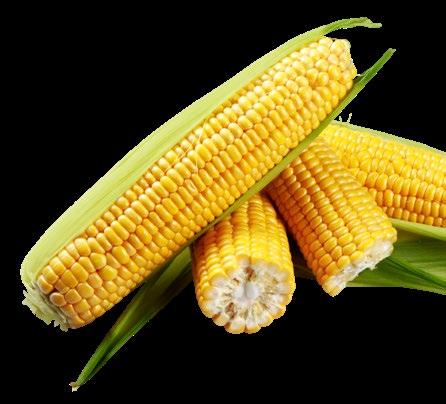
inorganic and organic adsorbents with biotransforming agents to broaden the spectrum of action.
Mechanism: Multi-modal action ensures coverage against aflatoxins, fusarium toxins, ochratoxin, and zearalenone.

Advantages: Improved reliability in real-world conditions where multimycotoxin contamination is common.
Limitations: Higher cost; performance depends on formulation quality.
Target Mycotoxins: Selection of binder should match the most prevalent mycotoxins in regional feed ingredients (e.g., aflatoxins in tropical regions, DON and ZEN in temperate climates).
Inclusion Rate: Over- or underdosing can affect efficacy and feed costs. Manufacturer recommendations should be adapted based on risk levels.
Feed Processing: Pelleting temperatures and feed pH can alter binder efficacy; stability should be considered during formulation.
Regulatory Status: Not all binders are approved for use in every market. Aflatoxin binders often have regulatory clearance, while those for fusarium toxins may be categorized as “technological additives” rather than officially recognized binders.
Synergy with Other Strategies: Binders should be used alongside good agricultural practices, proper storage, regular mycotoxin testing, and nutritional support to maximize protection.
Mycotoxins remain one of the most persistent and costly challenges in animal agriculture. Their effects on poultry, swine, and cattle compromise health, performance, and profitability, while also posing food safety risks. Complete elimination of contamination is not feasible, making mitigation strategies essential.
Mycotoxin binders, in their various forms—mineral adsorbents, organic yeast-derived compounds, enzymatic detoxifiers, or combinations thereof— play a crucial role in reducing the bioavailability of toxins and safeguarding livestock productivity.
The key to success lies in recognizing the diversity of mycotoxins and selecting binders with broad-spectrum efficacy, tailored to the production system and regional risks.
When integrated with preventive crop management, rigorous feed testing, and holistic nutritional programs, binders provide a robust defense, ensuring healthier animals, safer food products, and sustainable profitability for the livestock sector.





EFFECTIVENESS ON THE TYPE OF MYCOTOXIN(S)
SPECIFIC

DOSE
COMPOSITION

United States, Mexico, Guatemala, El Salvador, Honduras, Costa Rica, Panama, Dominican Republic, Nicaragua, Colombia, Ecuador, Venezuela, Peru, Chile, Argentina, Brazil, Uruguay, Paraguay, Spain, South Korea, Japan, Philippines, India, China, Malaysia
Formula ready to use for feed mills and farmers. Please note that due to different registration requirements, the ingredient description is slighty different in different countries. Check with regional representatives to confirm.
Broad-spectrum efficacy against multiple mycotoxins: Aflatoxin, Fumonisin, Ochratoxin, DON, T2 and Zearalenone
Dairy: Lactating cows: 28g/hd/day Beef: Feedlot and cows: 10-15 g/hd/day
Poultry: 1kg/ton
Swine: Sow: 2 kg/ton
Preparation of biologically active RFCs™ (Refined Functional Carbohydrates™) and Bentonite
BG-MAX™ Midds or BG-MAX™
Nursery: 2 kg/ton
Grow/Finish: 1 kg/ton
COUNTRIES OF DISTRIBUTION
ADDITIONAL INFORMATION
SPECIFIC EFFECTIVENESS ON THE TYPE OF MYCOTOXIN(S)
COMPOSITION DOSE

Highly effective mycotoxin binder that adsorbs the most dangerous mycotoxins. It operates independently of pH levels, and provides fast action against mycotoxins after feed intake. It selectively preserves essential nutrients such as vitamins and amino acids, and is exempted from toxic compounds (e.g. dioxins and PCBs).
From 0.5 to 2.5 kg/t of feed, depending on the level of mycotoxin contamination Aflatoxin B1 (AFB1) / Zearalenone (ZEN) / T-2 toxin / Fumonisin B1 (FB1 ) / Ochratoxin A (OTA) / Ergot alkaloids toxins (EAs).
® Bentonites (1m558; 1m558i) / Sepiolitic clay.
Evaluated efficacy based on toxicokinetic studies and biomarkers of exposure to mycotoxins on different target species, under EFSA regulations.
Anti-mycotoxin solution with triple action: adsorption / bioprotection / post-biotic effect. Effective against: Aflatoxins (AFB1, AFB2, AFG1 and AFG2), Fumonisins (FB1, FB2 and FB3), Zearalenone (ZEN), T-2 and HT-2 toxins , Ochratoxin A (OTA), Deoxynivalenol (DON; by detoxification), Ergot alkaloids toxins (EAs), Emerging mycotoxins (Beauvericin: BEA; Enniatins: ENN A, ENN A1, ENN B and ENN B1; Stregmatocystin, STC), Modified mycotoxins (Zearalenone Glucuronide; ZEN 14-G).
From 1.0 to 2.5 kg/t of feed, depending on the level of mycotoxin contamination
Africa, Asia, Europe, LATAM and Middle East.
A metabolic multi-action complex that mitigates the collateral effects of mycotoxins such as intestinal integrity impairment, oxidative stress and target organs alterations: The administration on continuous basis, boosts the productive parameters and enhances animal products quality (meat, egg, milk).
A systemic health solution that increases cell viability, shows antimicrobial activity against Salmonella entérica, Shigella dysenteriae, Staphylococcus aureus and Yersinia enterocolitica ; improves water quality and reduces the bioavailability of emerging mycotoxins in liver (Tenzuanoic acid).
From 1.0 to 2.0 ml/l of drinking water
Mycotoxins binder for aquatic species that offers a complete solution to face the mycotoxicoses challenge of aquaculture.
From 1.0 to 2.5 kg/t of feed, depending on the level of mycotoxin contamination Aflatoxin B1 (AFB1) / Ochratoxin A (OTA)/ Zearalenone (ZEN) / T-2 toxin / Fumonisin B1 (FB1).
Anti-mycotoxin solution for highly sensitive aquatic species to mycotoxins and phycotoxins with a triple mode of action: adsorption, bioprotection and post-biotic effect.
From 1.0 to 2.5 kg/t of feed, depending on the level of mycotoxin contamination Aflatoxins / Fumonisins / T-2 and HT-2 toxins / Deoxynivalenol (DON) / Emerging mycotoxins (Beauvericin, Enniatins, Stregmatocystin) / Modified mycotoxins.
BIŌNTE
® QUIMITŌX
® PLUS Bentonites (1m558; 1m558i) / Sepiolitic clay / Mixture of phytogenics extracts (Turmeric and Milk thistle extracts) / Yeast cell wall and hydrolyzed yeast.
® QUIMITŌX
® Liquid solution based on a mixture of phytogenics extracts (Grape and olive extracts) / Essential minerals / Emulsifiers / Preservatives.
BIŌNTE
Selected bentonite (1m558i) / Sepiolitic clay / Phytogenic feed additive (Orange peel meal).
BIŌNTE
® QUIMITŌX
® LIVŌX
BIŌNTE ® QUIMITŌX ® AQUA
BIŌNTE ® QUIMITŌX ® AQUA PLUS Selected bentonite (1m558i) / Sepiolitic clay / Mixture of phytogenics extracts (Turmeric and Milk thistle extracts) and emulsifier / Yeast cell wall and hydrolyzed yeast.
ADDITIONAL INFORMATION
SPECIFIC EFFECTIVENESS ON THE TYPE OF MYCOTOXIN(S)
DOSE
COMPOSITION

Worldwide
*Proven efficacy in “ in vivo ” and “ in vitro ” experiments. *Triple action antimycotoxicant: physical trapping mechanism, polar attraction mechanism, inhibition and destruction.
Wide spectrum of mycotoxin adsorption: Aflatoxins, Ochratoxin, T-2, Vomitoxin DON, Zearalenone
From 1 to 3 kg/tonne of feed, depending on the level of mycotoxin contamination
® Mixture of activated aluminosilicates with surfactants and mycotoxin destroying agents.
Toxidex Primus
Worldwide
Biomonitoring+ informs on mycotoxin impact and how to optimize the mitigation strategy with the detoxifier (Escent ® ). Besides, Biomonitoring+ can evaluate the efficacy of mitigation strategy and adapt if necessary, the Escent ® dose.
Biomonitoring+ is the under-patent service that –for the first timefollows the real toxin exposure. Just one drop of blood per animal is requested and is collected using minimal invasive technique (FTA card) to facilitate sampling. Periodical analysis provides unique data to understand the impact of mycotoxins and performance.
The real mycotoxin biomonitoring reference. Discover the real mycotoxin risk including up to 36 different mycotoxin biomarkers with just 1 drop of blood.
Biomonitoring+
Contact our sales team for the specific product according to your location and your nearest distributor at: info@liptosa.com
Great binding activity against mycotoxins and Gramendotoxins.
Selected clays
Yeasts and their parts Fructooligosaccharides Vegetal compounds (flavourings) Provitamins Antioxidants from vegetal sources *(composition may vary according to the specific product) 1-2 Kg/MT of feed depending on the degree of contamination (quantity to be determined according to the specific product) Aflatoxins: AFB1, AFB2, AFG1, AFG2, Zearalenone (ZEA) T2-Toxin Ochratoxin (OTA) Fumonisins (FB1) Deoxynivalenol or vomitoxin (DON) Citrinin Diacetoxyscirpenol (DAS) *(to be specified according to the product)
® PRODUCT RANGE
FINTOX
COUNTRIES OF DISTRIBUTION
Worldwide Further question: toxininactivation@miavit.de
SPECIFIC EFFECTIVENESS ON THE TYPE OF MYCOTOXIN(S)
COMPOSITION DOSE
• Toxin-inactivation = Adsoprtion (AFL, OCT, ZEN, Ergots) + highest binding capacity of endotoxins
• Toxin-inactivation = Adsoprtion (AFL, OCT, ZEN, Ergots)
+ highest binding capacity of endotoxins
• Advanced cell protection = Mixture of polyphenolic compounds
• Toxin-inactivation = Adsorption (AFL; OCT; ZEN; ERGOT) + Biotransformation (DON) + Biodegradation (FUM)
• Cell protection = Mixture of flavouring compounds
• GIT balance = Combination of toxin inactivation and natural ingredient
• Toxin-inactivation = Biodegradation (FUM)
• GIT booster = Synbiotics effects of probiotics and prebiotic + toxin-inactivation
• Immune modulator = mixture of natural ingredients
• Toxin-attachment = bentonite and clinoptilolite
• Supporting ammonia reduction = clinoptilolite
• Immune modulator and cell protection = organic trace element, mixture of flavouring and prebiotic compounds
Aflatoxin Zearalenon Ergotalkaloids Ochratoxin A Bacterial endotoxins
Monogastric: 0.5 –3 kg/t of finished feed
Ruminants: 30120 gr / head/ day
• Bentonite (1m558)
MiaBond
Aflatoxin Zearalenon Ergotalkaloids Ochratoxin A Bacterial endotoxins
Monogastric: 0.5 –3 kg/t of finished feed
Ruminants: 30120 gr / head/ day
• Bentonite (1m558) Mixture of phenolic compounds
MiaBond BP
Aflatoxin Zearalenon Ergotalkaloids Ochratoxin A Fumonisin B1 and B2 All Trichothecene (DON, DAS etc) Bacterial endotoxins
Monogastric: 1 –3 kg per ton of finished feed
• Bentonite (1m558) Anaerobic bacteria to biotransform trichothecenes (eg. DON)
MiaBond 360
Ruminants: 30120 gr / head/ day
Esterase enzyme to biodegrade FUM
• Mixture of flavouring and natural ingredients
Esterase enzyme to biodegrade FUM
• Mixture of natural ingredients
• Energy sources Pigs and poultry: 100-200 gr/ 1000 l of drinking water Fumonisin B1 Fumonisin B2
MiaBond Drink
• Mixture of probiotics and prebiotic
Aflatoxin Zearalenon Ergotalkaloids Ochratoxin A Bacterial endotoxins
Fish and shrimp: 0.5 –3 kg per ton of finished feed
• Bentonite and clinoptilolite
Mixture of flavouring compounds
MiaBond Aqua
• Organic trace element
• Prebiotic compound
In most Latin American countries.
SPECIFIC EFFECTIVENESS ON THE TYPE OF MYCOTOXIN(S)
DOSE
COMPOSITION
Effectively protects the intestinal barrier and the immune system of animals against mycotoxin aggression, improving animal health and farm profitability.
Silymarin acts as a powerful hepatoprotector and organic Selenium acts as a natural antioxidant.
AFLA +++ ZEA +++ OTA +++ DON +++ FUM +++
AFLA +++ ZEA ++ OTA ++ DON + FUM +
Mix homogeneously in the total ration, from 0.5 to 2.5 Kg/T of feed, depending on contamination. Application at feed mill level.
Montmorillonite, Algoclay® Technology, Diatomaceous earth, Yeast cell walls, Algae extracts
MT.X+
Beta-glucans, Mannan- oligosaccharides, Bentonite, Vegetable charcoal, Selenium, Silymarin
FIX HP

Mexico, Argentina, Chile, Bolivia, Peru, Ecuador, Colombia, Honduras, El Salvador
Our adsorbent production plant operates under the HACCP food safety system, holds ISO 22000 v. 2018 accreditation, FAMI QS v.6 certification, and Good Manufacturing Practices (GMP) certification issued by SADER. We have toxicology research laboratories with installed capacity to conduct both in vivo and in vitro mycotoxin tests, as well as biology and chemistry laboratories accredited under ISO 17025, an international standard that sets requirements for the technical competence of testing and calibration laboratories, ensuring reliable and quality results. The products are free from dioxins (Eurofins, Germany), heavy metals (arsenic, cadmium, mercury, and lead), and microbiological contaminants (free from Escherichia coli).
Preventive: 0.751.0 kg/ton High contamination: 1.0 –1.5 kg/ton Zearalenone Fumonisin B1 Ochratoxin A Aflatoxin B1 T-2 Toxin (demonstrated in in-vivo testing)
Organoaluminosilicate (hydrated calcium sodium aluminosilicate activated with a surface treatment)
Zeotek ®
Preventive: 1.5 –2.0 kg/ton High contamination: 2.0 –3.0 kg/ton
Organoaluminosilicate (hydrated calcium sodium aluminosilicate selectively activated with a surface treatment)
Duotek ®
Preventive: 2.5 kg/ton High contamination: 5.0 kg/ton Aflatoxins & Fumonisin B1
Hydrated calcium sodium aluminosilicate
Zeolex ® Extra
Dr. Edgar O. Oviedo-Rondón
Prestage
Department
of Poultry Science, North Carolina State University, Raleigh, NC, USA
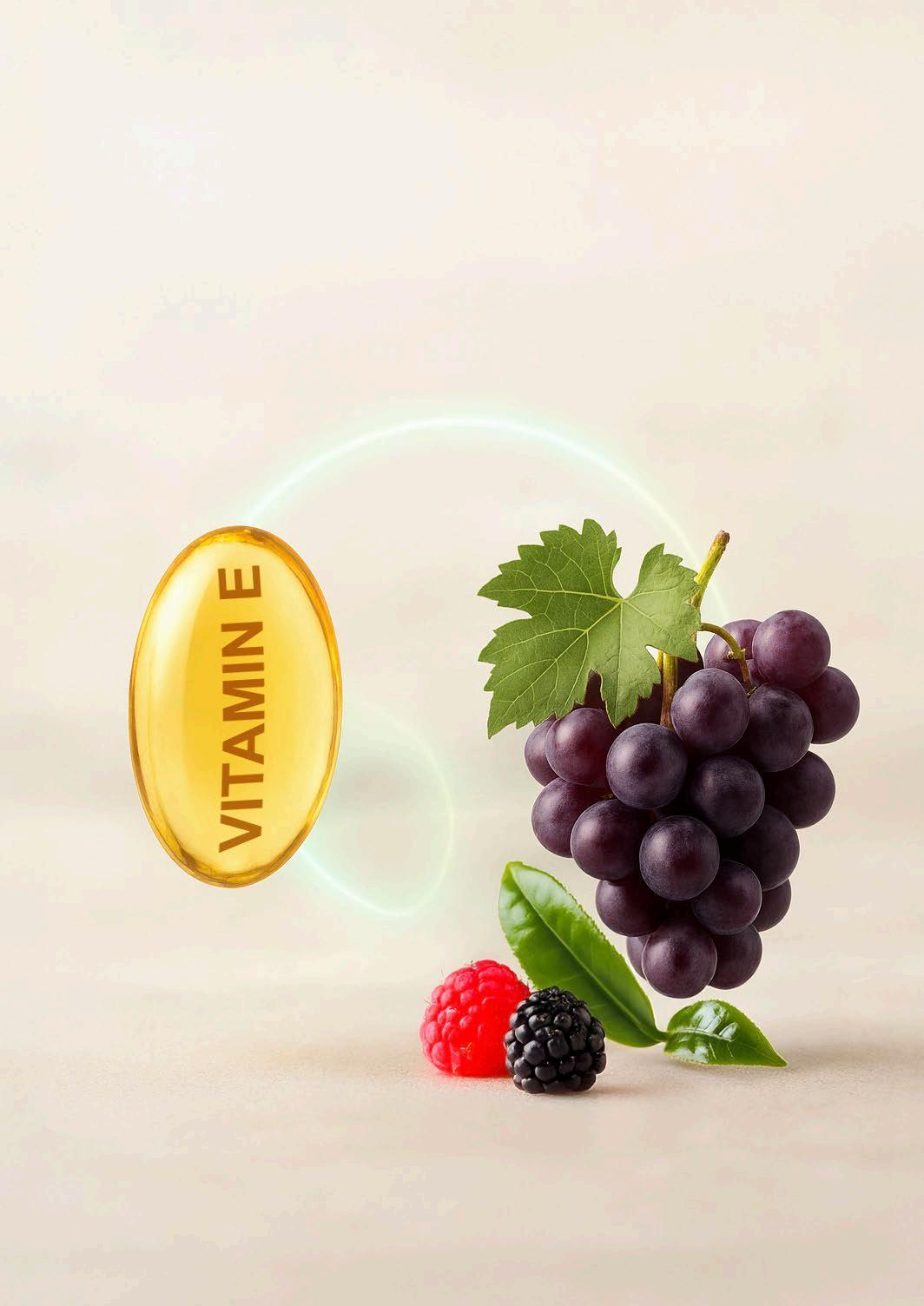
Rising global prices of vitamin E prompted a new trend of promoting other antioxidantrich products as alternatives. One of the categories that has attracted the most attention is polyphenols. This article aims to describe the various functions of vitamin E that extend beyond its antioxidant properties and compare them to the activities of polyphenols.

However, when discussing vitamin E and all antioxidants, we need to mention free radical production, the antioxidant system, and their effects on health, reproduction, and animal productivity. It is essential to understand that some vitamin E effects are due to nonantioxidant properties.
Vitamin E is considered the most potent lipid-soluble antioxidant in cells. Feed additives like polyphenols, which have antioxidant properties, are promoted as alternatives to vitamin E. However, by analyzing polyphenol chemistry, metabolism, and functions, we aim to explain why various technical and scientific organizations have not fully supported these claims.
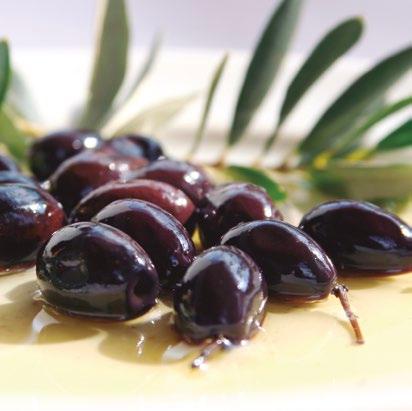
Vitamin E includes tocopherols, tocotrienols, and their eight fat-soluble isoforms—alpha, beta, gamma, and delta. Recently, tocomonoenols with only one double sidechain have been added to this group. Most vitamin E activity in animal tissues is attributed to alpha tocopherol.
These molecules were discovered over a hundred years ago. In 1938, it became possible to synthesize alpha-tocopherol chemically. Extensive research has been carried out on these molecules across all animal species in the past century.

Vitamin E metabolism is well understood. Its digestion and absorption are similar to those of other fat-soluble compounds. Many aspects of its metabolism have been measured for each isoform and across different animal species.
It is known that plasma levels regulate absorption and range between 15% and 45%. Specific liver proteins transport vitamin E, and later, lipoproteins carry each isoform to all tissues and cells.
Dietary Vinamin E
Natural T
Synthetic T Esters: Acetates, Succinates, etc.
Hydrolsis
Emulsi cation
Mixed Micelles
Free T
Cholesterol
Bile Acids
Other Liquids
Bile
Bile Acids
Hepatic Vitamin E Pool
HEPATOCYTES
Chylomicron Remmants
Chylomicron

After passive and active absorption by three proteins in the jejunum, 70% of the metabolism occurs in the liver. Alphatocopherol transported by lipoproteins can have a plasma concentration between 11 and 46 µmol/L.
Red blood cells contain 2 to 7 µmol/L. Kidneys and intestines complete the metabolism of vitamin E, but its deposition in all cells has been well confirmed.
Plasma levels of delta and alpha tocopherol stay high for over two days of administration and build up over weeks. This molecule integrates well into several tissues, especially those rich in polyunsaturated fatty acids.
Vitamin E functions have been well studied. The most well-known is as an antioxidant. Tocopherol scavenges free radicals, especially peroxyl radicals and singlet oxygen, in cell membranes.
However, it has fundamental non-antioxidant functions, such as cell membrane stabilization, which is critical in all tissues, especially red blood cells and platelets, to avoid coagulation.
It regulates enzyme activity and supports cellular signaling, cell proliferation, and gene expression necessary for angiogenesis, vasculogenesis, and the functions of monocytes, macrophages, and endothelial cells.
In this way, vitamin E can help prevent diseases such as neurological and muscular disorders, cardiovascular diseases, agerelated eye and skin damage, and infertility.
Additionally, tocotrienols can induce immune responses and lower serum cholesterol levels.
There is multiple evidence that Vitamin E can improve health, boost immune systems, hatchability, fertility, and oxidative stability of muscle, milk, and egg yolk. Vitamin E can enhance milk yield, egg size, and nutritional quality of animal products. Vitamin E can also help reduce heat stress and immunological stress.

Vitamin E interacts with all members of the antioxidant system to neutralize free radicals in membranes. Because of its liposoluble properties, Vitamin E diffuses into the membrane and interacts with phospholipids.
It is essential for membrane stabilization by forming complexes with destabilizing molecules to prevent disruption of the amphipathic balance within the structure.

Vitamin E interacts with vitamin C and enzymes to create the thiol cycle, crucial for maintaining cellular redox homeostasis, protein structure, and various metabolic pathways.
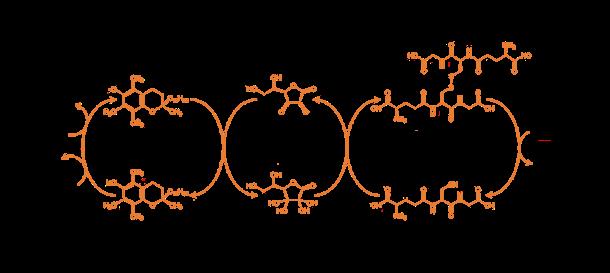

All cells produce free radicals during the oxidative processes of metabolism. The free radical production increases due to environmental or immunological stress, disease, and high productivity levels.
Free radicals cause cell damage, alter membrane fluidity, modify ion transport, reduce enzyme activity, alter membrane signal transduction, and affect DNA and protein synthesis.
This can lead to tissue damage, subclinical diseases, reduced animal performance productivity, and reduced animal product quality.
Zanthine exidase, Autoxidation (eg. avins; catechols)
Transition metal ion (Fe,CU)
Oxidases and avoproteins
Cytoplasm
Peroxisome
Micro laments
Centrioles
Microtubules
Myeloperoxidase (phagocytes)
Smooth endoplasmic reticulum
Mixed-function oxidase electron transport. Cytochromes P450, etc.

Electron transport/ respiratory chain
Nuclear envelope
Chromatin
Nucleolus
Rough endoplasmatic reticulum
Ribosomes

Plasma membrane
Lipoxydenases
Prostaglandin synthase, NADPH oxidases
Normal / Healthy cell
Damaged cell
Membrane lipids demage
Alter membrane udity
Modify ion transport
Nucleic acid demage
Loss of enzyme activity
Proteins and enzymes damage
Damage to small molecules on the organelles or body
Alter membrane signal transduction
Cell or Tissue Death
Development of subclinical diseases
In farm animals
Ponnampalam et al., 2022
To prevent these adverse effects, every cell in all tissues has an antioxidant system that involves many compounds functioning in various parts of the cell.
Vitamin C and E , ß-catotene
A ect protein synthesis DNA damage
Abnormal / Unhealthy cells (Apoptosis /necrosis)
Poor animal performance and productivity
Quality deterioration of milk and meat
Due to its liposoluble proteins, Vitamin E plays a vital role in the nucleus, endoplasmic reticulum, lysosomes, mitochondria, and cell membranes. Many other compounds, such as vitamin C and B-carotenes, as well as others listed here, can act in different regions of cells or tissues.
Cu/ZN SOD
Vitamin E+
ß-catotene ß-catotene
Vitamin E
Glutathione Peroxidase
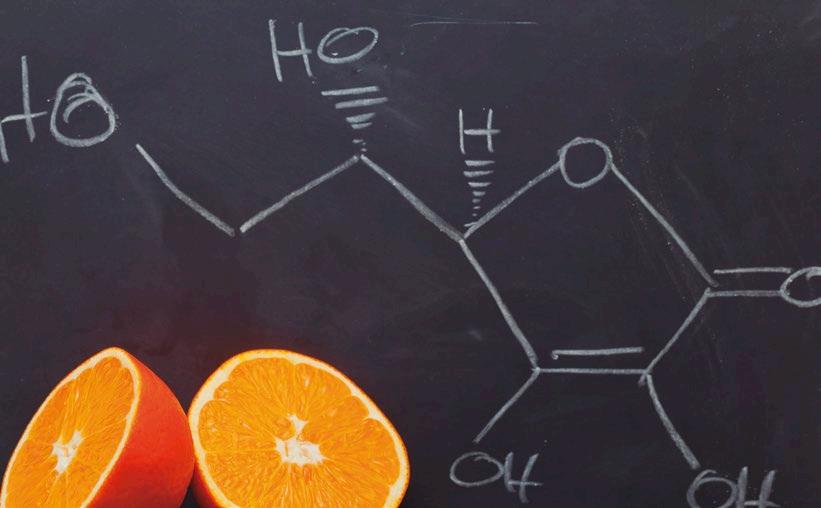
Vitamin C
GSH
DNA
Vitamin E
Mn
SOD+Glutathione
Proxidose + GSH
Enzymatic antioxidants
Superoxide dismutase, glutathione peroxidase
Non-enzymatic antioxidants
Vitaminc A, C, avonoids carotenoids, etc.
Bioactivity
Antioxidants
Solubility Size
Water soluble antioxidants
Ascorbic acid, glutathione, uric acid
Fat soluble antioxidants
Vitamin A, beta-carotene, coenzyme Q10
Small-molecule antioxidants
Retinol, tocopherol
Endogenous
Primary Enzymatic SOD GPx CAT Trx GSH
Large-molecule antioxidants
Flavonoids, catechins, carotenoids
Secondary Tertiary
Enzymatic
G6PD GR GST Ubiquinone
Non enzymatic
Enzymatic
Methionine sulfoxide reductase DNA reparing enzymes Proteolytic enzymes
Antioxidants
Antioxidants can be categorized based on their enzymatic or non-enzymatic activity, their solubility in water or fat, and their size. Small molecules tend to have more activity at the cellular level, while large molecules mainly act in the mucosa and fluids.
Many endogenous antioxidants can interact with exogenous molecules, which, in most cases, are nutrients and some xenobiotic compounds like polyphenols.
Exogenous
Primary Secondary Tertiary
Vitamin A
Vitamin C
Vitamin E Carotenoids
Polyphenols
Ethyl acetate
Vitamin A
Vitamin E
Zn, Se, Cu
Nicotinamide
Omega 3
When claiming antioxidant properties for a feed additive, specific parameters must

This directive classifies antioxidants depending on their properties in food, as part of the antioxidant defense system, or as products that can protect from premature aging and damage to DNA, protein, and lipids. The evaluation methods differ between efficacy as a food or cell antioxidant.

The plasma antioxidant capacity must follow specific methods to support a claim for an antioxidant product. This EFSA directive also states that, to make claims for a feed additive as part of the antioxidant defense system, you cannot use antioxidant enzymes like superoxide dismutase, catalase, or glutathione peroxidase, because these are not specific and may also indicate a prooxidant effect.
These properties have been limited to vitamins and minerals only. This is why claims that replace the antioxidant benefits of vitamins with various feed additives, including polyphenols, have not been approved.
It is essential to recognize that all antioxidants are necessary for protecting cells from various oxidizing species. Vitamin E alone cannot prevent the harmful oxidative changes in lipids, and multiple antioxidants are needed to defend cells from oxidation.
Vitamin E constantly interacts with nutrients like vitamin C, selenium, and other trace minerals. Selenium and vitamins prevent lipid peroxidation and ferroptosis. No vitamin or mineral can perform these functions alone, and no other chemical compounds can be true antioxidants alone or substitute entirely for the functions of others.
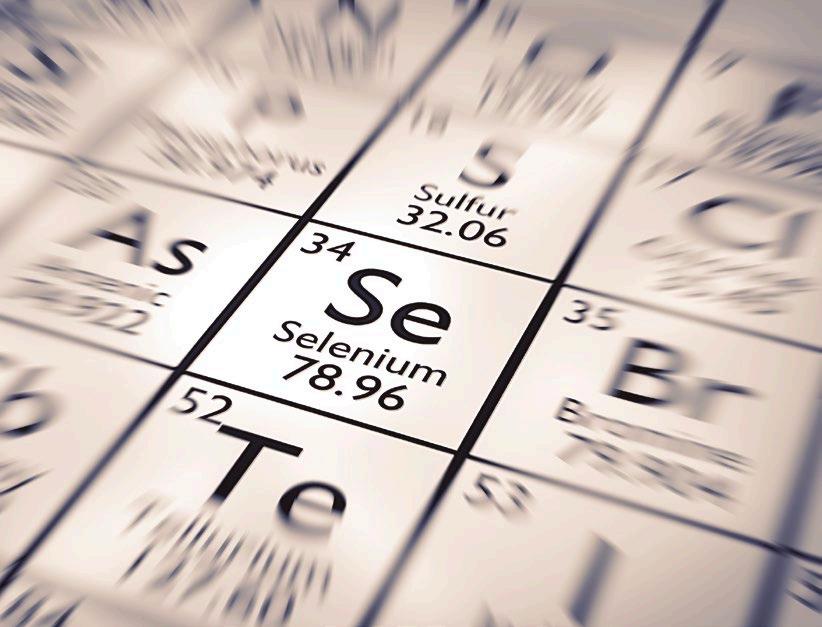

All dietary polyphenols originate from plants and have been frequently included in human diets for centuries. They form a large group of over 8,000 diverse compounds classified into phenolic acids, stilbenes, lignans, flavonoids, and tannins. Flavonoids are the most prevalent. They are found in various fruits, medicinal plants, and vegetables.
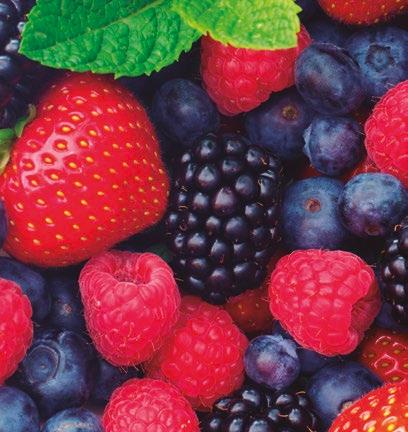
Phenolic acids
Hydroxyhenzoic acid

Gallnut Gallic acid
Tea
Hydroxycinnamic acid
Chlorogenic acid Eucommia ulmoides
acid
Ferulic acid
Caffeie acid
Resveratrol Secolariciresionol
Condenced tannins
Hydrolyzable tannins
Procyanidins Gallotanins Ellagitannins
Procyanidin B2
Ellagic acid Punicalagin
Blueberry Cranberry Mango Pomegranate
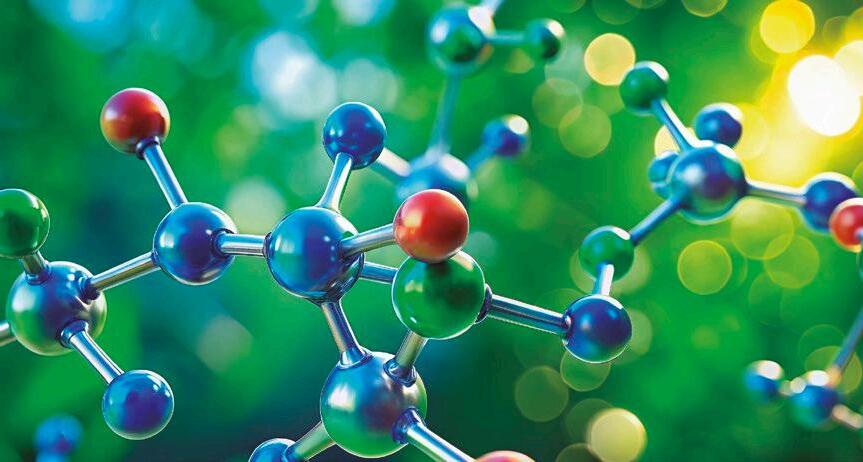
The proposed steps in polyphenol metabolism resemble those of most xenobiotics. They are primarily metabolized by the gut microbiome and transformed in the intestinal membranes through various mechanisms.
Polyphenols can undergo sulfation, methylation, glucuronidation, or conjugation before absorption; very few are absorbed in their original form. Most researchers agree that their prebiotic and antimicrobial effects are the most significant.
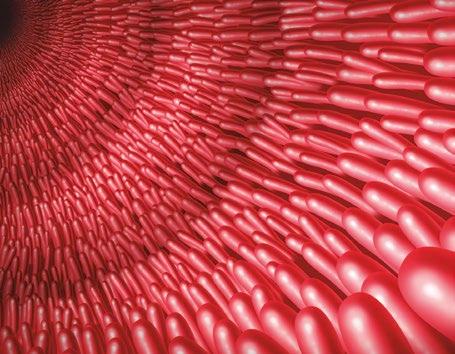
Only 5 to 10% are absorbed into the liver for further biotransformation and are later excreted via the bile or kidneys. Negligible amounts are found in tissues.
Dietary supplements
Intake
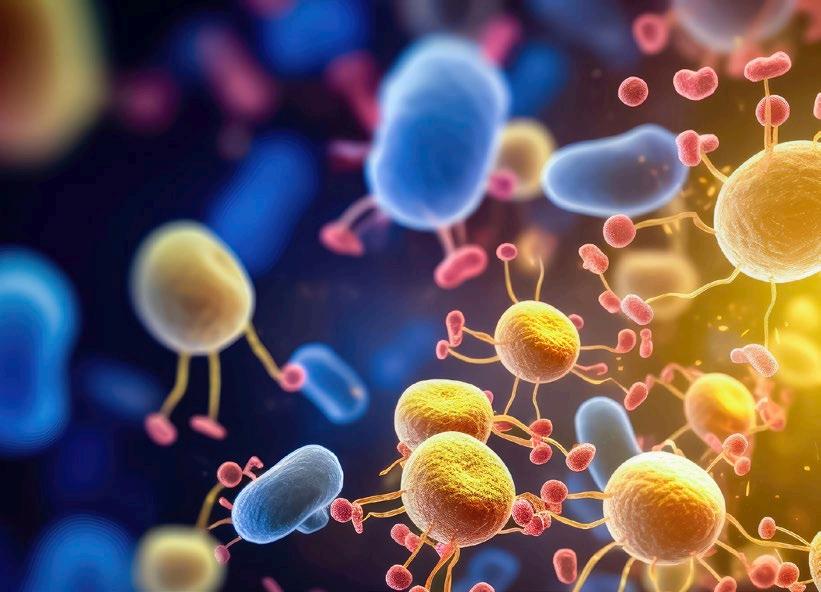
Methylation
Glucuronidation
Sulfation
Liver Bileduct
Sistemic circulation
Tissues and cells
Stomach rst pass
Small intestine
Large intestine
Colon
Catechines Flavanols
Flavones
Conjugation reaction
Microbial metabolism
Phenolic acids
Action of bacterial enzymes
fecal excretion
Methytation
Gluronidation
Sulfation
Kidney
Sistemic circulation
urine
urinary elimination

Dietary polyphenols
Small intestine
Hydolysis of most glycosides by intestinal enzymes
Large intestine
Hydolysis of glycosides and desconjugation of conjugated polyphenol metabolietes by microbial enzymes
Prebiotics e ects
Antimicrobial e ects
Aglycones
Aglycones Absotion (5-10%)
Unabsorbed polyphenols and polyphenol, metabolities
feaces
No more than one microMole of intact flavonoids can be detected in plasma after ingesting polyphenol-rich diets. Peak concentrations of polyphenols are detected within 1 to 2 hours of ingestion and reduce drastically if no additional ingestion occurs, indicating a transient activity.
Higher concentrations of polyphenols are found only in the liver and kidneys, where they are mainly biotransformed for excretion.
Ephitelial cells Biotransformation
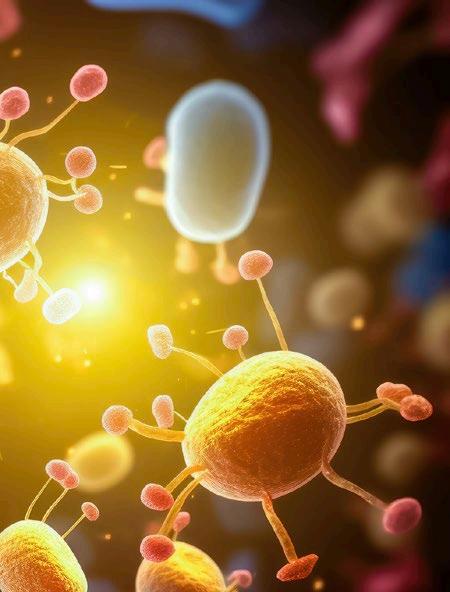
Tissues
Polyphenol metabolities
Polyphenol metabolities Bile
Liver
Species - and-sex -especi c biotransformation: glucuronidation, mehtylation, sulphation
Polyphenol metabolities
Kidney
Renal excretion of metabolities
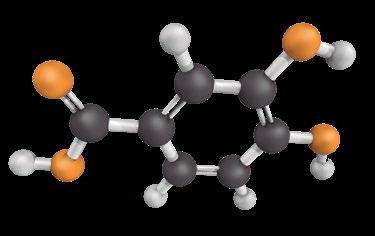
polyphenols can increase insulin sensitivity, regulate blood sugar levels, reduce inflammation, regulate digestive enzymes, reduce body fat accumulation, and primarily modulate gut microbiota. All these effects are at the intestinal level.
Even the antioxidant activity we discussed earlier is mediated by the induction of enzymatic activity or through the effects of insulin.
Insulin sensivity
Polyphenols such as: Green tea and berries
Enhance insulin sensivity
• The cells become more responsive to insuline
• Improving glucose uptkae up utilization
• Regulating blood sugar levels
In amation reduction Regulation of enzymes Stimulation of fat metabolism Gut microbiota modulation Antioxidant activity
Chronic in amation Linked to:
Insuline resistance+ Obesity
• Polyphenols have anti-in amatory properties
• Helping mitigate in amation in the body by reducing in ammation
• Supporting better insulin sensivity and glucose metabolism
Alqarni et al., 2024
Some polyphanols inhabit certain enzymatic
in CHO digestion = absortion
• Inhibiting such as alpha-amylase and alpha-glucoside by slowing the breakdown and absorption of carbohydrates
• Helpind prevent spikes in blood sugar levels after meals
Some polyphenols may trigger antioxidant responses through enzymatic mechanisms at the cellular level, but never directly in membranes or as part of the innate antioxidant system.
Most of the antioxidant properties of polyphenols have been tested in vitro. However, there is very little evidence of similar activity in vivo, likely because of their low absorption and plasma levels.
Certain polyphenols: Grapes, Red wine, Green tea
Stimulate Fat breakdown = increase fat oxidation
• Reducing body fat accumulation
• Supporting weight management
Some polyphenols serve as prebiotics that promoting Growthing, composition and activity of bene cial gut bacteria wich impact the metabolism and in amation
Many polyphenols: Free radicals attacking cell and oxidotative stress
• Scavenging free radicals
• Reducing oxidotative stress
• Protecting cells from oxidotative damage
• Improve insulin sesivity and metabolic health
However, several publications claim that polyphenols can replace vitamin E. No organization that has rigorously evaluated those tests and methodologies has approved this claim.
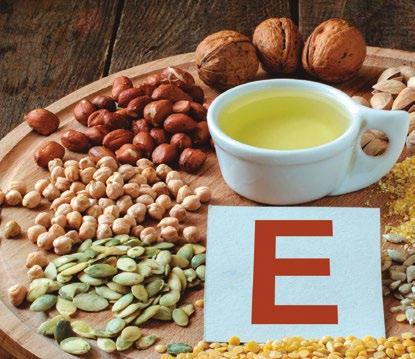




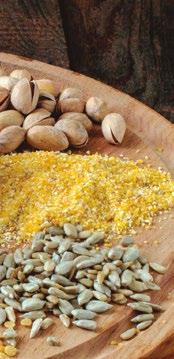

Mitra et al., 2023
Inhibition of DNA gyrase and DNA topoisomerase
Inhibition of protein synthesis



Polyphenols can have multiple potential functions, but a single polyphenol does not exhibit all effects at once. In this graphic, we can observe 32 synergisms among 35 different polyphenols. Each combination may have a different activity.

To date, polyphenol products derived from grape seed extracts and other polyphenol sources are not EU-registered as nutritional or zootechnical additives. By law, they can only be added to animal feed as an ‘aromatic compound’.
Based on the current regulatory scenario, legally speaking, no anti-oxidative, anti-carcinogenic, antiinflammatory, or other beneficial effects should then be attributed to grape extracts in feed.
The suggestion that they can replace specific vitamins in animal feed can also be seen as misleading.
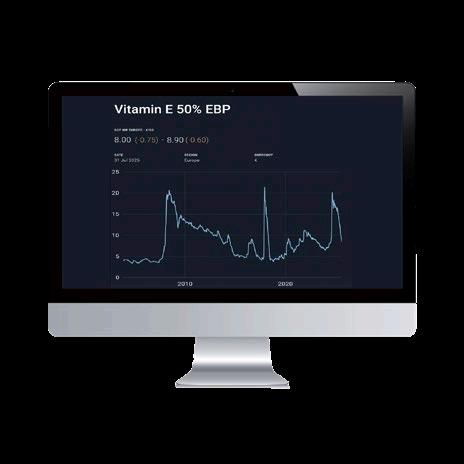
This would be possible only if the polyphenol products are EU-registered as nutritional additives (e.g., vitamins) or zootechnical additives (e.g., antioxidants).
Beyond the regulatory situation, which can vary by country, many commercial polyphenol-based products have appeared on the market in recent years.
Especially when the price of vitamin E was high (20 USD/kg vit E50). These products were put forward as a cheaper alternative to vitamin E. However, current market prices lower than 10 USD/kg of Vitamin E are drastically reducing the interest in such a replacement.
The level of vitamin E to be replaced by polyphenols varies broadly among polyphenol producers. Depending on the polyphenol product, claims suggest that a 1 g product can replace anywhere from 1 to more than 20 g of vitamin E, despite most products appearing quite similar in composition when reviewed by ingredient list.

In conclusion, Vitamin E is a nutrient with well-known metabolism, deposition, functions, and long-lasting activity. This vitamin has well-defined antioxidant properties within the antioxidant system and constantly interacts with other molecules. Vitamin E has specific nonantioxidant functions within animal metabolism.
In contrast, polyphenols are a diverse group of plant compounds with metabolism that is not yet fully understood. They have limited absorption and deposition, and their metabolism usually resembles that of xenobiotic substances with
Polyphenols may have various effects mainly in the gastrointestinal area, but no single compound possesses all the properties attributed to all polyphenols.
Some polyphenols can support the antioxidant system, but not all of their activities are widely accepted, and they cannot replace many cellular antioxidant and non-antioxidant functions of vitamins.
Products derived from grape seed extracts and other polyphenol sources are not registered in the European

Vitamin E and Polyphenols: Complementary compounds but not substitutes. DOWNLOAD ON PDF

Toni Marjanen Head of Sales in Manna Insect and Digital Nomad Entrepreneur
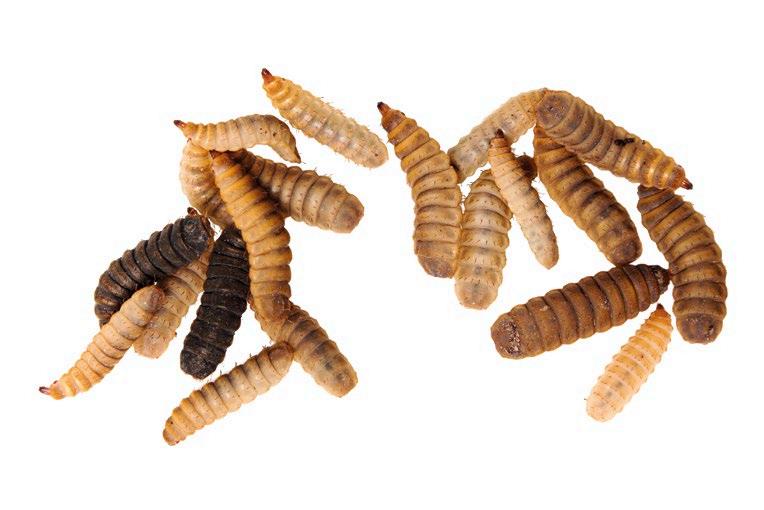
The Black Soldier Fly (BSF) industry has emerged as a promising industry at the intersection of agriculture, organic waste management and circular economy. This article explores the challenges, innovations and future potential of professional BSF farming through the lens of real-world experience.

The BSF industry is evolving rapidly. Many have invested in large, centralized insect factories in different parts of the world, but these models do face serious limitations.
The focus is now shifting toward decentralized, ecosystem-based models. These smaller, local units offer flexibility, reduce transportation costs and emissions, and empower local farmers.

Key trends shaping the industry include:
Collaborative, ecosystem-driven business models
Region-specific innovation and adaptation
Greater integration of BSF into circular economy frameworks
Regulatory development
Diversification of insect-based products
Collaboration and scalability in the Industry
BSF farming fits well into the circular economy principles. The larvae convert a wide range of organic waste into valuable biomass within days, offering both environmental and economic sustainability.
Advantages include:
High efficiency biowaste reduction
Local production and low emissions
Valuable products: larvae for feed, frass for fertilizer
Faster, cleaner processing compared to composting
Enabling resource recovery and minimizing landfill usage
The process creates sustainable products that reduce dependence on fish meal and soy, improve soil health and support regenerative farming practices.
Centralized BSF farms often rely on expensive automation or large-scale labor, limiting adaptability. Large scale production is often done in factory halls, with high energy consumption.
Decentralized systems are modular, resilient and closer to the communities they serve. They reduce disease risk, lower logistics costs (moving organic waste is expensive) and support community ownership. Breeding should be done locally and separately to keep costs low, as high BSF egg prices, as well as possible low quality of them, can quickly undermine profitability.

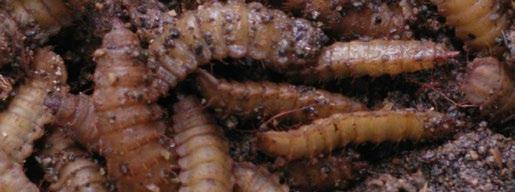
Moreover, decentralized farms allow experimentation with local waste streams and enable scalable expansion by replicating smaller, proven units.
This modular approach increases resilience and makes the model more inclusive. To thrive and bring maximal value via fast growth and high survival rate, BSF larvae and flies require stable, optimal conditions with carefully controlled climate parameters like temperature, humidity and CO2 levels.
Small and medium BSF farms face unique challenges. Key needs include:
Semi-automated systems to reduce labor costs
Robust and affordable climatization technology to maintain optimal environment for the efficient bioconversion process
Practical training and standardized protocols
Knowledge of optimal waste blending for larvae nutrition
Shared infrastructure and market access
Supportive policies, subsidies or recognition under sustainable agriculture programs
Clear guidelines for bio-security, hygiene and traceability
Expertise in feed formulation is essential, as different waste streams require precise mixing to ensure safe, efficient larvae growth. Tracking and controlling waste inputs is also critical to maintain quality and safety, especially in decentralized systems.
The substrate in BSF farming is more than waste, it’s the foundation of quality. Feed composition affects larvae growth and survival rate, as well as the final product value.
High-protein waste leads to proteinrich larvae, very well suitable for example poultry, pigs and aquaculture. Consistency in substrate formulation also improves predictability of the final product.
Frass quality also depends on the feed. Properly processed, frass can be a highquality organic fertilizer with beneficial microbial properties. This opens doors for specialization in animal nutrition and tailored feed solutions, further enhancing the value proposition of BSF operations.

Animal nutritionists can help to:
Optimize larvae diets for quality and yield
Integrate BSF meal into livestock diets based on species-specific needs
Monitor nutritional profiles and adjust formulations
Ensure compliance with feed safety and quality standards
Their expertise ensures BSF products are safe, effective and aligned with evolving feed industry requirements.
BSF meal is a highly adaptable feed. By changing the substrate, producers can meet specific animal nutrition goals:
High-protein meal for poultry
Fat-rich meal for aquaculture
Fiber-balanced formulations for pigs and ruminants
Hypoallergenic variants for pet food
This flexibility makes BSF meal a valuable ingredient for sustainable feed, especially as pressure mounts to find alternatives to fish meal and soy.
Challenges still exist:
Organic material input variability: Efficient, safe handling of diverse feed stocks remains a hurdle. Consistent protocols and substrate quality tracking are essential.
Disease and pests: Dense production increases risk. Modular, decentralized setups help manage outbreaks, but they still require robust bio-security practices.
Regulatory gaps: Insect regulations vary by region and often lag behind industry progress. Clear rules and cross-border recognition are needed.
Standardization and automation: Most specialized systems are too manual or too costly. Affordable, semi-automated solutions are needed for feeding, dosing, climate control and harvesting.
Establishing common industry standards and fostering knowledge-sharing networks can accelerate solutions to these hurdles.

To move from small-scale backyard farming to efficient and productive professional BSF production, operators must understand the current situation, opportunities and future vision of the insect business. Important tools and factors to consider include:
Advanced bioconversion technologies: Affordable technology utilizing sensor data and technical solutions, can drastically improve efficiency, yields and reliability, particularly in varying climates.
Efficient breeding solutions: Breeding must be local and lowcost. If breeding and nursing costs rise, profitability vanishes. Breeding should support bioconversion, not be integrated within it. Specialized breeding centers can supply networks of decentralized producers.
Ecosystem platforms: Digital tools connect producers, standardize data and support collaboration across the industry. These platforms foster transparency, shared learning and coordinated growth.
Localized adaptation: Customizing BSF operations to local climates, waste availability and market demands ensures sustainability and adoption. Mobile units, modular kits and farmer-led models are examples of this evolution.
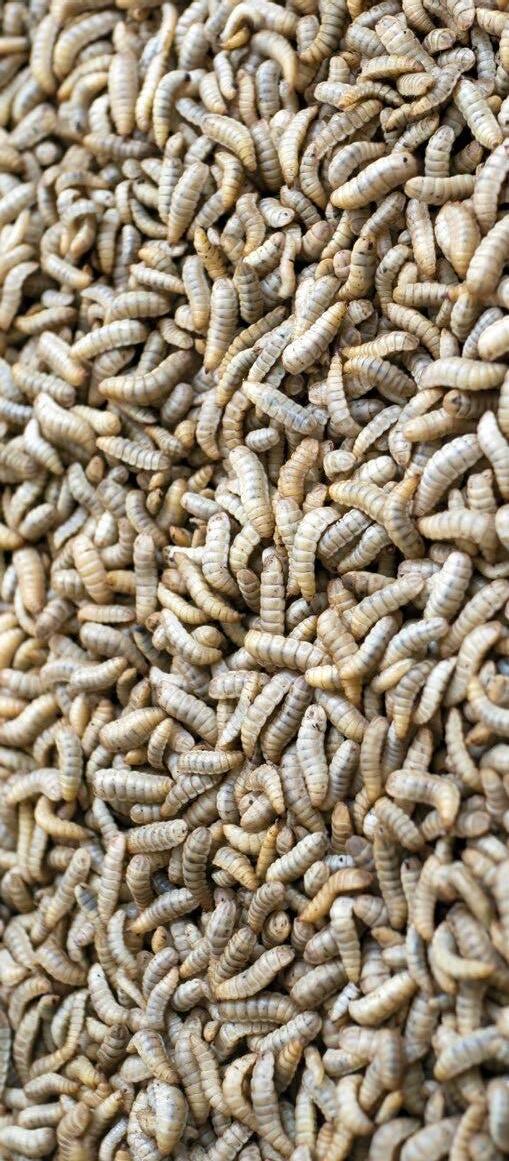
BSF farming is not just about insects, it’s a solution for biowaste management and sustainable agriculture. Accessibility, replicability and local integration are in a key role. Growth won’t come from megafactories, but from networks of innovators solving local challenges.
As the world looks for scalable environmental solutions, Black Soldier Fly insect offers a practical, high-impact path forward. By embracing decentralization, improving productivity and profitability with climatization, supporting local expertise and fostering innovation, the BSF industry can help close the loop in global food and waste systems.


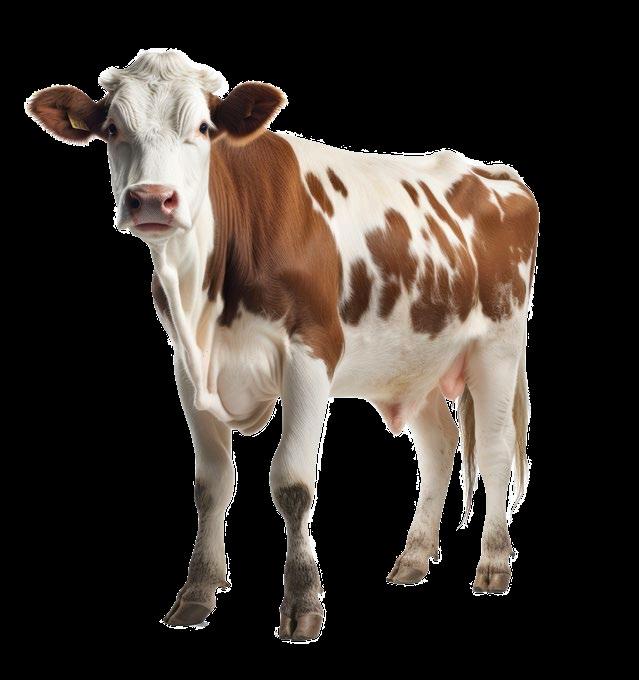
Mycotoxins are toxic compounds produced by certain types of molds, which are naturally present in agricultural commodities around the world. These toxins can be a significant threat to livestock health and performance, and therefore to the productivity and profitability of animal production systems.

Despite advances in agricultural practices and feed processing technologies, mycotoxins remain a persistent challenge, primarily due to their variability, ubiquity, and complex interactions with both the feed matrix and animal physiology.
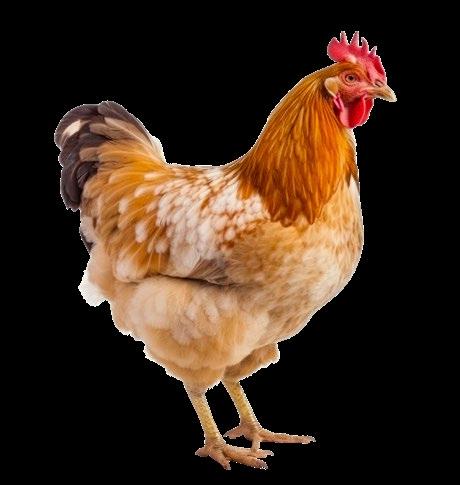


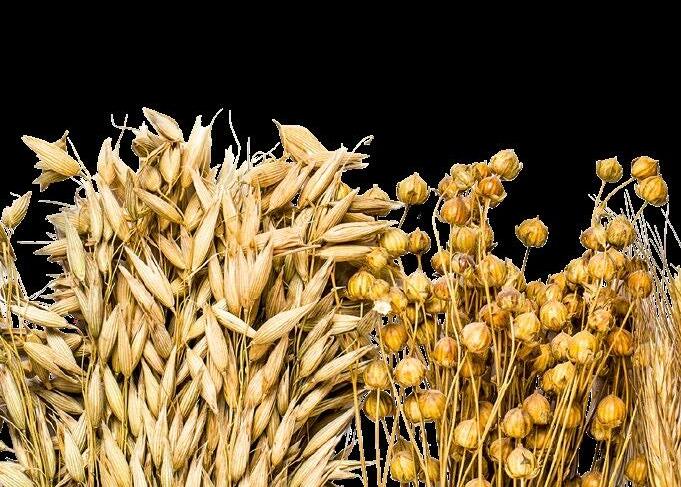
To effectively mitigate the negative impact of mycotoxins, it is no longer sufficient to rely on isolated measures or reactive approaches. A holistic, data-driven, and preventive strategy is now essential.
This is the objective behind the development of Myco’Kingdom, digital platform from Olmix that brings together a suite of expert tools and scientific resources for comprehensive mycotoxin risk management.

nutritionists, and feed professionals in understanding, evaluating, and controlling mycotoxin risks at every stage of the field-to-feed chain.
Mycotoxins are secondary metabolites produced by fungi, typically under specific environmental or physiological stress conditions such as temperature fluctuations, drought, mechanical damage, or microbial competition.

These compounds serve no immediate benefit to the molds themselves, yet they represent a major hazard to animals consuming contaminated feed.

Contamination risk varies not only with fungal species but also with crop type, climatic region, agronomic practices, and storage conditions. For instance, corn is generally more prone to contamination than cereals like barley or wheat.

Molds that produce mycotoxins fall into two broad categories:
Field molds: such as Fusarium species, which infect crops during their growth in the field.
Storage molds: including Aspergillus and Penicillium, which proliferate during postharvest storage under warm and humid conditions.
Regional trends have been observed as well: deoxynivalenol (DON) is more prevalent in temperate climates (e.g., Northern Europe or North America), while fumonisins are more frequently found in tropical or subtropical regions.
What makes mycotoxin management particularly complex is that contamination levels are unpredictable and can vary greatly from year to year, even within the same geographic area.
Factors such as plant variety, soil health, crop rotation, harvesting timing, and drying conditions all contribute to this variability. This unpredictability highlights the importance of a proactive and holistic approach.
Myco’Essentials, available both in print and digitally within the Myco’Kingdom platform, provides a detailed foundation in mycotoxin science, offering users critical insights into mold behavior, toxin biosynthesis, environmental triggers, and contamination trends.
Another valuable educational tool within the platform is the Myco’Simulator, a smartphone application that visualizes the molecular structure of major mycotoxins.
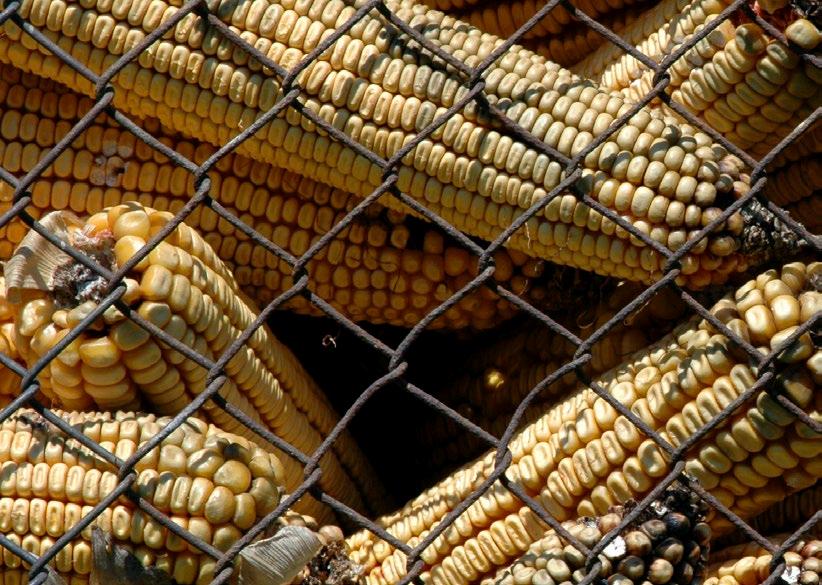
By examining features such as molecular size, polarity, flexibility, and functional groups, users can better understand why certain mycotoxins exhibit specific biological behaviors or toxicities—knowledge that is key when selecting effective
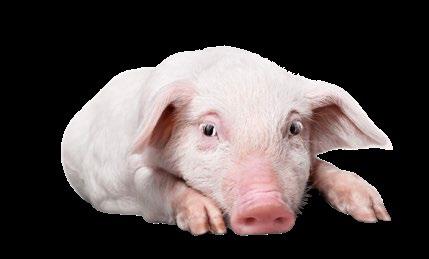
The term mycotoxicosis refers to the toxic effects of mycotoxins on animal health. These effects can be either acute resulting from short-term exposure to high toxin levels—or subclinical, caused by sustained exposure to lower doses.
While acute mycotoxicosis may present with clear and visible symptoms such as organ failure or death, it is rare in commercial production.
The real challenge lies in subclinical mycotoxicosis, which often goes unnoticed but leads to long-term losses in animal growth, reproductive performance, immunity, and overall farm productivity.
These impacts can include reduced feed intake, impaired gut health, reproductive disorders, weakened vaccine responses, and increased susceptibility to pathogens.
To stay updated on the evolving scientific landscape of mycotoxin effects, Myco’News (the Myco’Kingdom newsletter) shares scientific findings from toxicology, analytical chemistry, risk assessment, and veterinary research.
It is a reliable resource for feed industry professionals seeking to stay ahead of emerging threats and innovations.
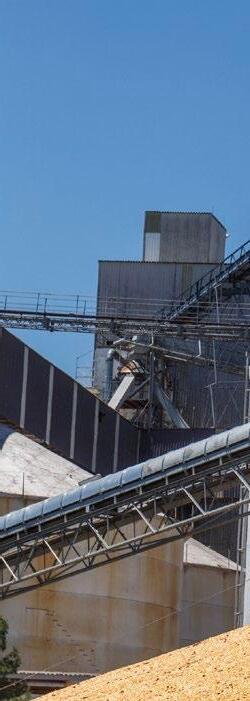
At the farm level, mycotoxin-related problems often come to light only after performance losses or animal health issues are observed. However, early detection can prevent irreversible damage.
The Myco’Evaluator, a free online tool, is designed to assess the probability of mycotoxin contamination based on a series of farm-specific risk factors. These include crop origin, storage practices, harvest and drying methods, and the presence of certain animal symptoms.
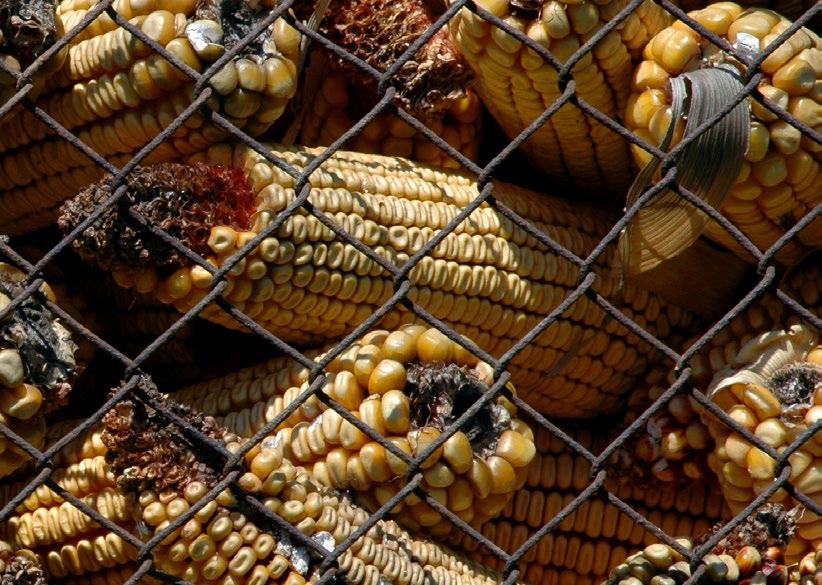
While not a diagnostic test per se, this preliminary evaluation offers a helpful indication of whether mycotoxins may be contributing to observed problems, guiding decisions on whether to proceed with chemical analysis.
In feed manufacturing, establishing an effective mycotoxin monitoring strategy is essential for quality control and customer assurance.
However, the task is complicated by the polycontamination phenomenon. Feedstuffs often carry multiple mycotoxins at once, each with different chemical characteristics and toxicological profiles.

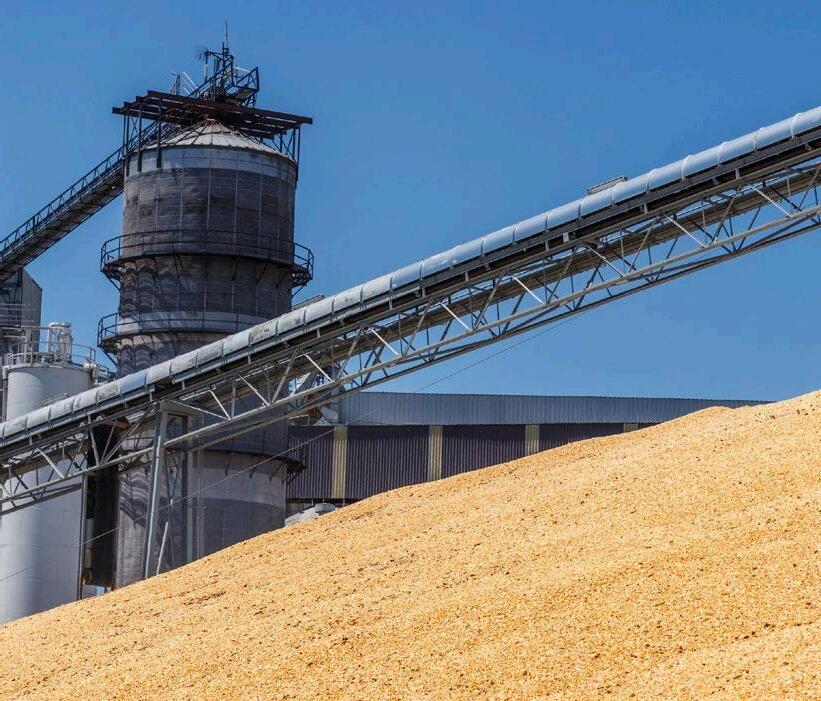
Given the practical limitations in testing all incoming batches for dozens of mycotoxins daily, a rational sampling and testing protocol is required.
This is where Myco’Screen, another Myco’Kingdom tool, plays a vital role.
It provides guidelines for optimal sample collection, emphasizing that up to 80% of analytical error stems from poor sampling techniques rather than laboratory procedures.
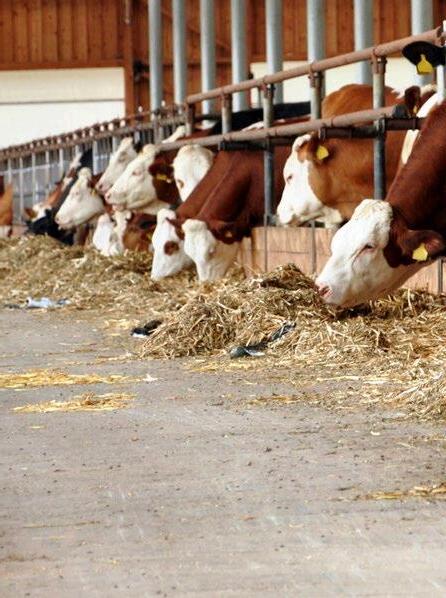
Obtaining mycotoxin analysis results is only half the equation; interpreting them correctly is equally crucial. Understanding how specific contamination levels interact with animal species, production stage, and health status helps determine whether immediate interventions are needed.
For example, young piglets or high-yielding dairy cows may require stricter thresholds than mature poultry or ruminants. Additionally, formulation adjustments (such as ingredient substitutions or changes in inclusion rates) can be made to limit animal exposure to problematic feed batches.
Depending on the context, Myco’Screen offers access to both rapid tests (such as ELISA strips or microwell assays) and advanced full-spectrum analyses, capable of detecting over 45 different mycotoxins per sample via LC-MS/MS (liquid chromatography-mass spectrometry).
This dual approach allows feed producers to: balance speed cost and analytical depth.
The Myco’Screen personalized reports, generated by Olmix experts, assist users in this interpretation phase. These reports synthesize lab results, provide contextual analysis, and offer practical recommendations tailored to specific feeding scenarios.


Despite all preventive efforts, it is virtually impossible to eliminate mycotoxins entirely from feed. Therefore, feed formulations often include mycotoxin deactivation strategies, primarily through:
Adsorbents: compounds that bind mycotoxins in the digestive tract, preventing their absorption. Common examples include bentonites, activated clays, yeast cell walls, and sepiolite.
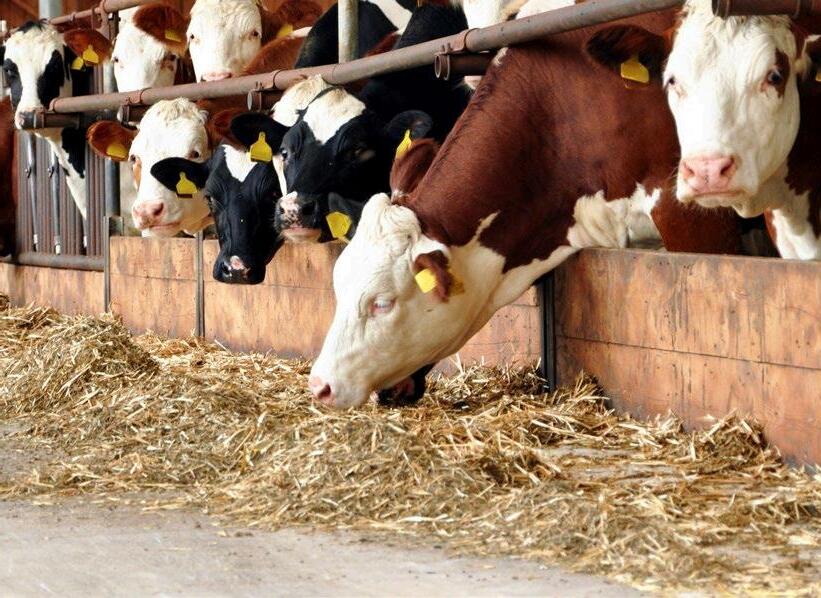
Biotransforming agents: enzymes or microbes that degrade or modify mycotoxins into less harmful forms.
An effective toxin binder is typically a carefully formulated blend of multiple components, designed to cover a wide spectrum of mycotoxins, including challenging ones like DON and fumonisins.
The Myco’Calculator is an intelligent tool within Myco’Kingdom that helps determine the optimal binder inclusion rate based on the contamination profile, species-specific sensitivity, health status, and economic constraints.
It allows users to fine-tune their feed strategies and strike the right balance between efficacy and cost-efficiency.
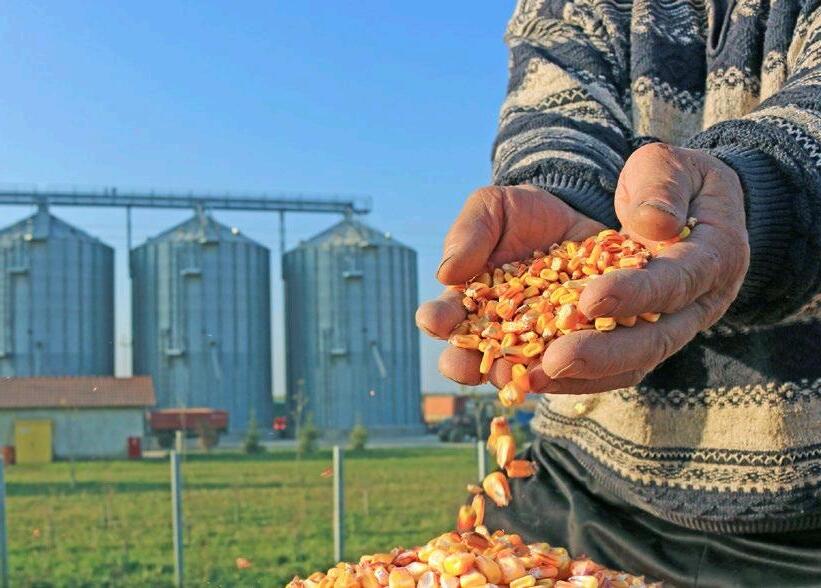
Health support additives: substances that support detoxification organs (like the liver), strengthen gut integrity, or boost antioxidant defenses, helping animals better tolerate residual toxins.
The increasing complexity of modern animal production calls for smarter, more integrated tools. With Myco’Kingdom, Olmix empowers stakeholders across the agri-feed chain with a centralized platform for data, diagnostics, education, and decision support.
By combining real-time evaluation tools, scientific resources, practical guidelines, and expert interpretation, Myco’Kingdom facilitates a shift from reactive troubleshooting to proactive prevention.
Whether you’re managing feed ingredients, formulating diets, or troubleshooting animal performance, this platform offers valuable support at every step.
Mycotoxins are an unavoidable yet manageable challenge in animal nutrition. Through early risk assessment, accurate diagnostics, informed interpretation, and strategic interventions (including feed formulation and binder use) feed mills, vets and farmers can mitigate their impact and protect animal health and productivity.
Myco’Kingdom by Olmix offers a comprehensive platform with tools designed to assist nutritionists and feed formulators in managing mycotoxin risks effectively.







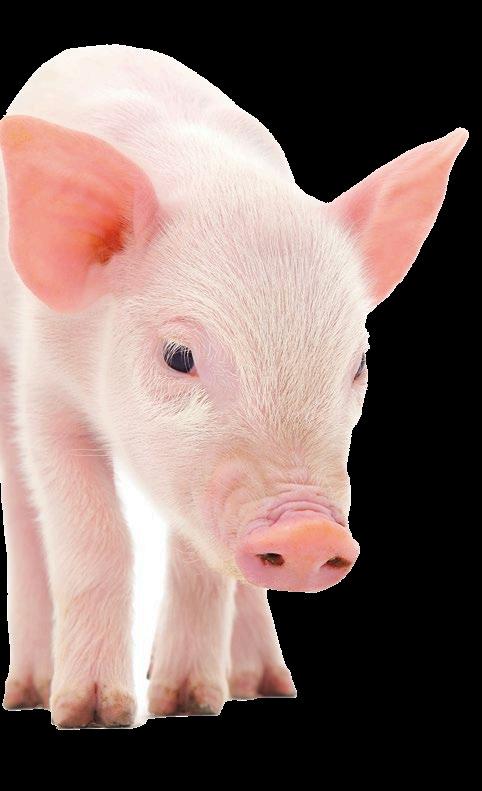
Gerardo Ordaz Ochoa, María Alejandra Pérez Alvarado, Luis Humberto López Hernández National Research Center for Physiology and Animal Improvement, INIFAP, Mexico
As already mentioned in sections I and II of this article, in modern pig production, nutrition is one of the most determining factors for growth, health, and efficiency in the pork production process.
SECTION 1
SECTION 2
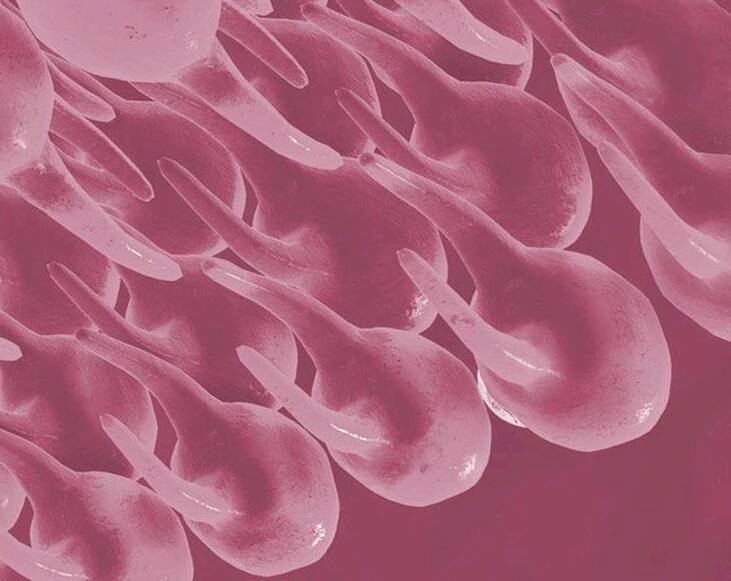
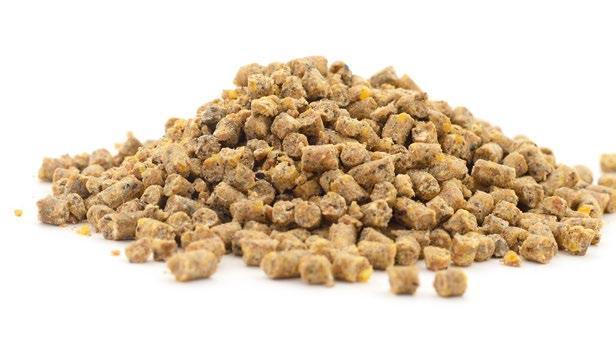
Fat, as an energy source, is an essential component of animal diets, and its inclusion in pig rations can improve palatability, energy density, and overall animal performance.
The intake of oxidized fats can have several negative effects on the health and performance of pigs [1]:
Weight gain reduction Lower food e ciency
Negative e ects on the health of pigs
However, the quality of the fat used is crucial. One of the issues that has attracted attention in recent decades is the use of oxidized fats in pig nutrition.
Lipid oxidation (see section I), a process that deteriorates fats when exposed to oxygen, heat, light, or metals, can have harmful effects on the health and performance of pigs, as well as on the final quality of the meat.
Furthermore, the intake of oxidized fats can induce oxidative stress in animals, resulting in an imbalance between free radical production and the endogenous antioxidant capacity of the organism.
This can cause cellular damage and affect the immune function of pigs, making them more susceptible to diseases [2].
In the long term, oxidative stress can contribute to a reduction in meat quality, affecting its commercial value and shelf life.

The well-being and healthy growth of piglets are fundamental for profitability and success in pig production. The diet of piglets must be carefully formulated to meet their nutritional needs and promote optimal development.

In this context, fats play a crucial role as an energy source, facilitating growth and influencing the intestinal maturation of piglets.
The intake of oxidized fats in piglets can have more pronounced adverse effects compared to larger animals, because they are more vulnerable due to their developing immune system and rapid muscle growth.
The toxic compounds generated during lipid oxidation (aldehydes and ketones) can cause:
Cellular damage
Oxidative stress
Imbalance between the production of free radicals and the endogenous and exogenous antioxidant capacity of the organism to neutralize them
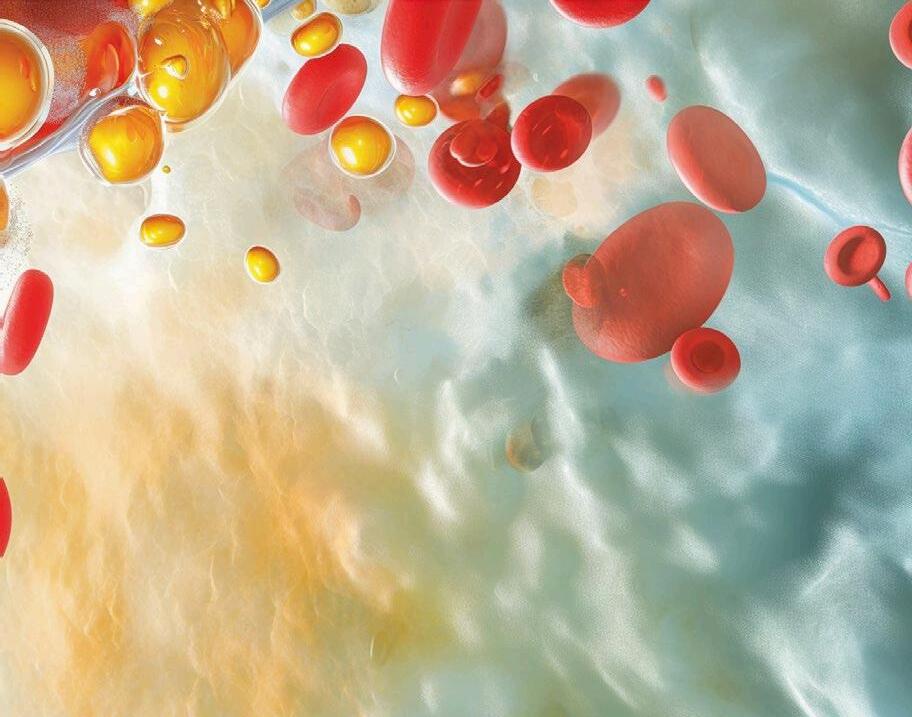

One of the first signs of the negative effects of oxidized fats in the diet of piglets is the reduction in growth rate and feed efficiency.
According to what was reported by Silva et al. [3], piglets fed diets containing oxidized fats showed a significant decrease in daily weight gain compared to those fed fresh fats (Fig. 1).

This phenomenon can be attributed to the lower energy availability in oxidized fats, as well as the negative effect of toxic compounds (aldehydes and ketones) on nutrient absorption and metabolism.
Firdstein et al. [4] report a loss of serum vitamin E levels in post-weaning piglets fed an oxidized oil, even after higher supplementation of 110-120 mgVE/kg (Fig 2). Which suggests increasing the antioxidant response in scenarios of dietary oxidative stress.
2.4 2.2 2.0 1.8
Post-weaning days
The consumption of oxidized fats also has a significant impact on the intestinal health of piglets.
Studies have shown [5] that oxidized fats can alter intestinal health, inducing inflammatory processes and the expression of genes related to mucin junction proteins in the jejunal mucosa, which suggests damage to the intestinal tissue (Table 1).
INDICATOR* FRESH FO (3%)

*Values reported on day 28 post-weaning.
FO (1.5%) + OXIDIZED FO (1.5%)
Table 1. Effects of oxidized fish oil (FO) levels on inflammation indicators and gene expression related to mucins in the jejunal mucosa of weaned piglets. Modified from Luo et al. [5]
Furthermore, oxidative stress induced by the consumption of oxidized fats can affect the immune system of piglets.
A compromised immune system can make piglets more susceptible to infections and diseases.
As with piglets, finishing pigs also show a decrease in productive performance when consuming oxidized fats.
Pigs that consume oxidized fats show lower weight gain compared to those fed fresh or low-oxidation fats.
This effect is partly due to: 1 2 3
Lower energy availability in oxidized fats
Lower digestion and absorption of nutrients
Increased metabolic requirements due to oxidative stress
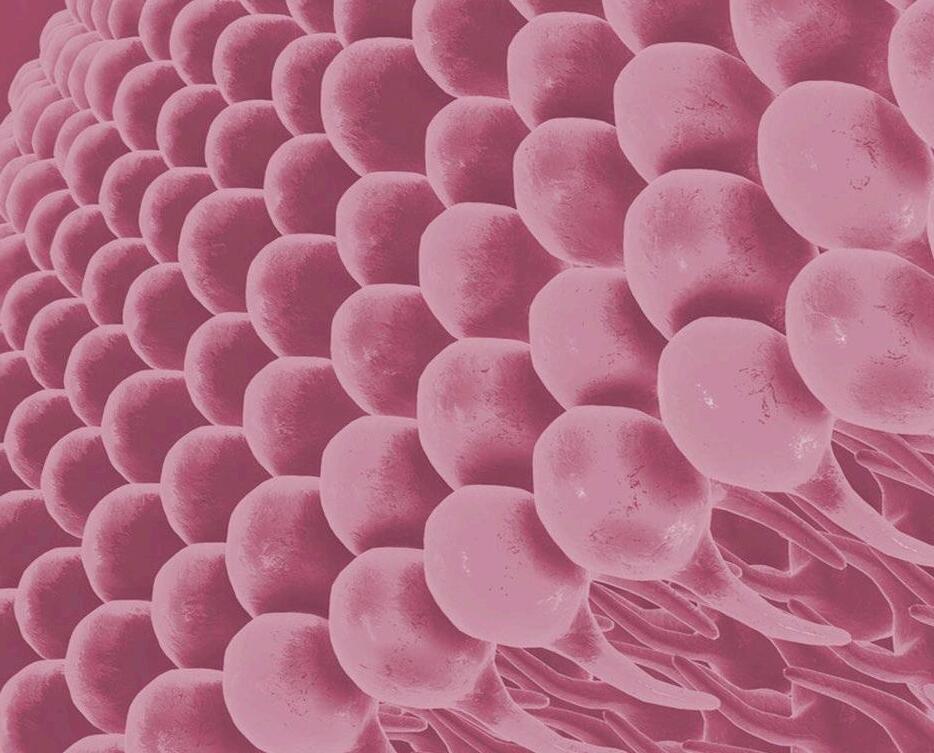
The use of oxidized fats for pig feeding not only affects farm productivity, but also can increase production costs due to the need for larger amounts of feed to reach the desired weight at slaughter.
This is without considering the economic loss associated with the lower meat quality of these pigs.
The use of oxidized fats in pig feeding can also have repercussions on meat quality.
The accumulation of lipid oxidation products in adipose tissue can cause deterioration in the sensory quality of the meat, affecting its flavor, odor, and texture [5].
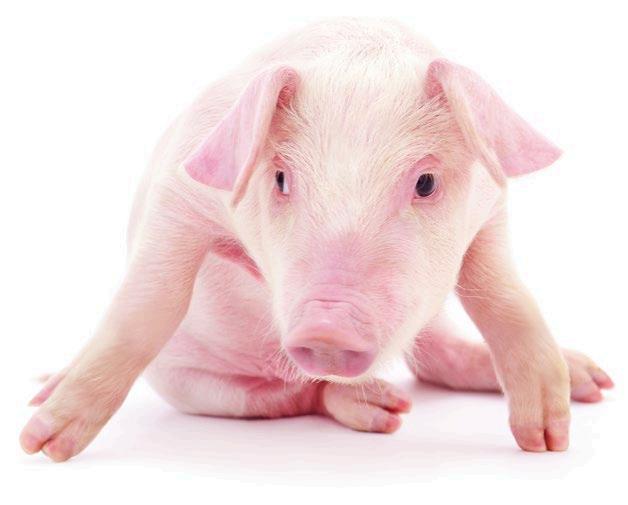
characteristics
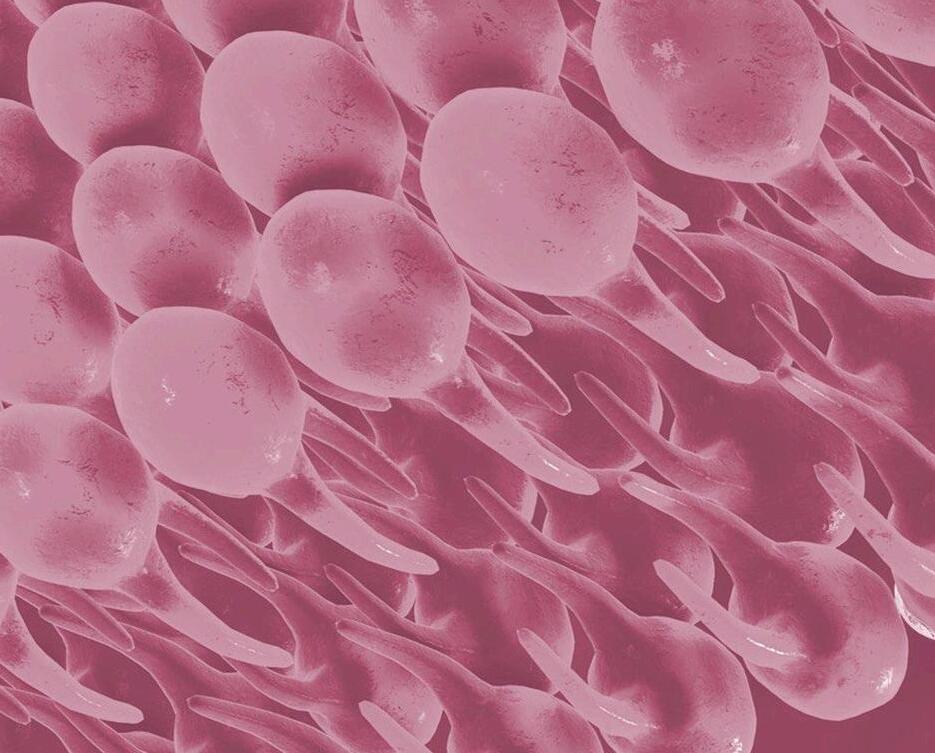
aDietary treatment: LFO, low fish oil content (2% fresh fish oil); HFO, high fish oil content (8% fresh fish oil); OFO, oxidized fish oil (8% oxidized fish oil, peroxide index = 250 meqO2·kg−1).
Table 2. Effects of supplementation with fresh fish oil and oxidized fish oil on carcass characteristics and meat quality of finishing pigs. Modified from Guo et al. [6]
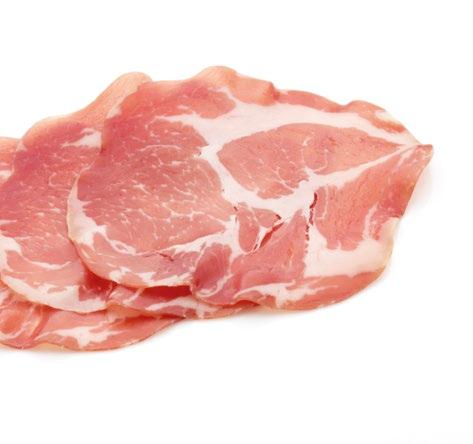
Meat from pigs fed oxidized fats tends to have a shorter shelf life due to greater susceptibility to rancidity, resulting in economic losses for producers and retailers.
Lipid oxidation in meat can also generate compounds that are potentially harmful to human health, such as aldehydes and ketones, which are degradation products of oxidized fatty acids.
Therefore, the quality of fat in the diet not only affects animal performance and health, but also has direct implications for food safety and consumer perception of meat quality.
Given the negative impact of oxidized fats on swine production, it is essential to implement strategies to mitigate their effects.
One of the main measures is the control of the quality of fat raw materials before their inclusion in the diet.
This includes regular evaluation of the peroxide level and other indicators of lipid oxidation in the oils and fats used in feed formulation [7]; however, the type of fat being used must be considered, as some fats may be at more advanced stages of oxidation.
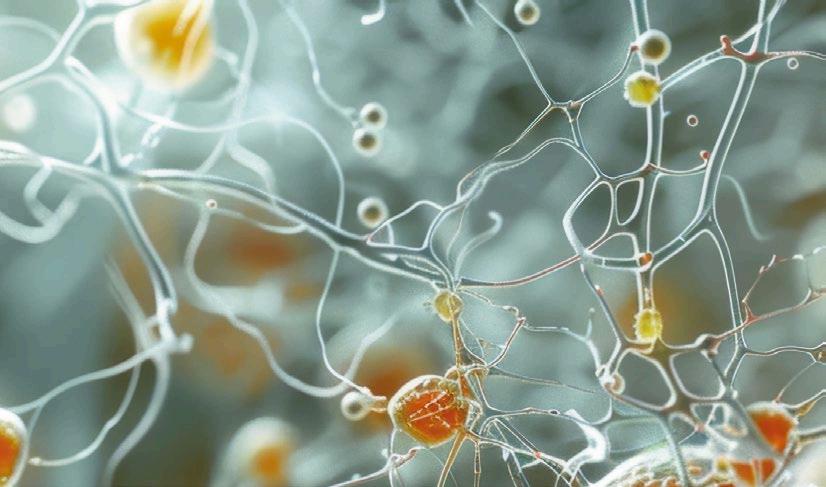
Another strategy is the addition of antioxidants to the diet, which can help counteract the effects of fats susceptible to oxidation. Natural antioxidants such as vitamin E, vitamin C, and phenolic compounds have been shown to be effective in reducing oxidative damage in animal tissues [8], but the use of vitamins to reduce oxidation in feed is not economically viable.
Proper management of fat storage and handling is crucial to minimize exposure to factors that promote oxidation.
1
The use of oxidized fats in pig feeding is a highly relevant topic for the swine industry due to its implications for animal performance, health, and final meat quality.
2
The adverse effects associated with lipid oxidation underscore the importance of using highquality raw materials and adopting practices that prevent or mitigate oxidation.
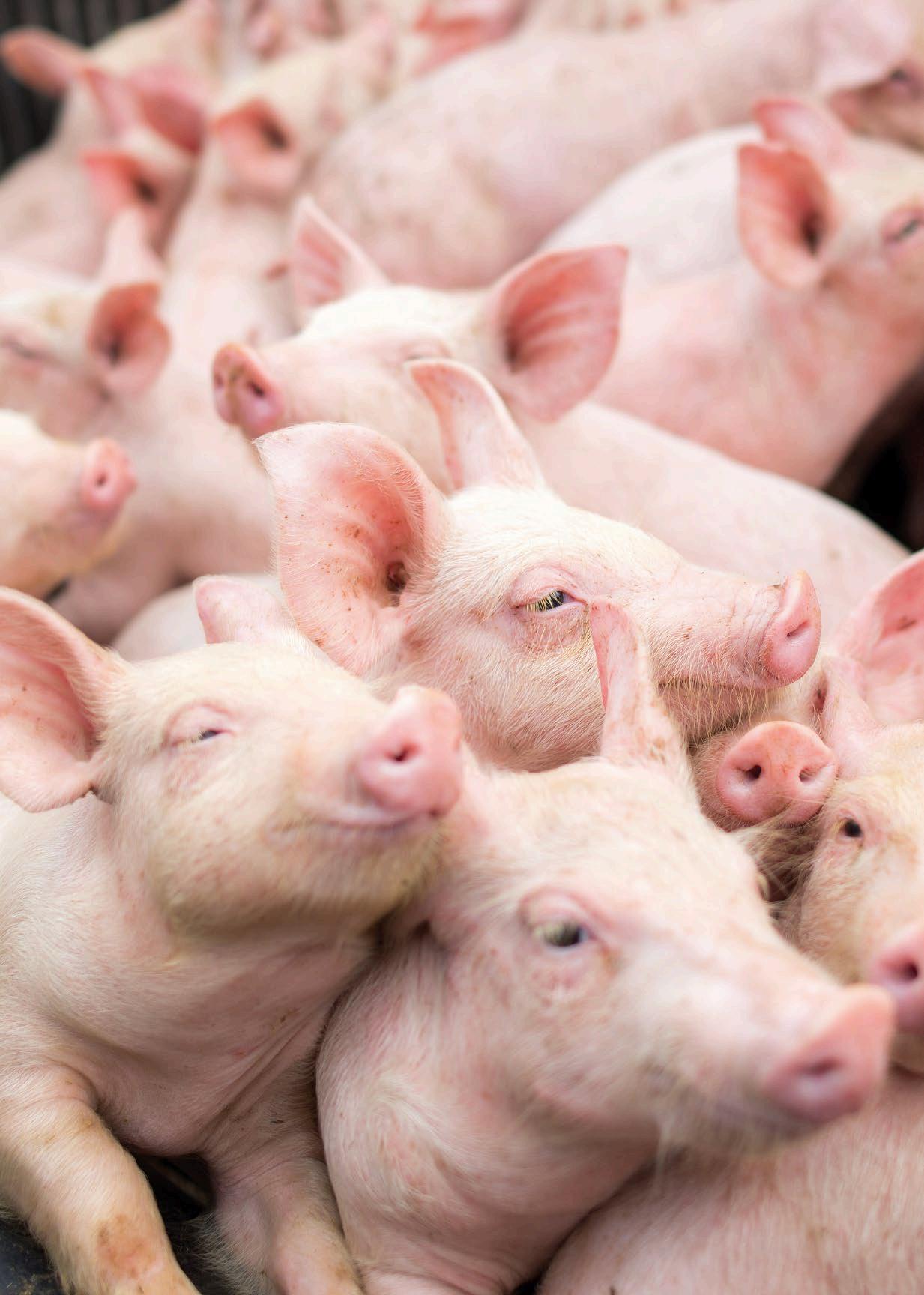
3
Through proper diet management and the inclusion of antioxidants, it is possible to minimize risks and ensure a high-quality final product, that meets food safety standards and satisfies market expectations.
References available in the web version of the article at nutrinews.com
The use of oxidized fats in pig feeding: production line and finished product. Part 3/3
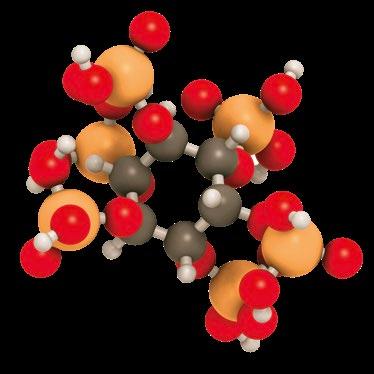
The hydrolysis of phytic acid and phytates occurs gradually, producing free phosphates and intermediate products that can be absorbed to a small extent.
Phytate degradation in the gastrointestinal tract is almost complete, even in diets without intrinsic food phytase, since there appears to be considerable degradation of phytate due to microbial action in the large intestine, but this phosphorus released from phytate in the large intestine appears not to be absorbed

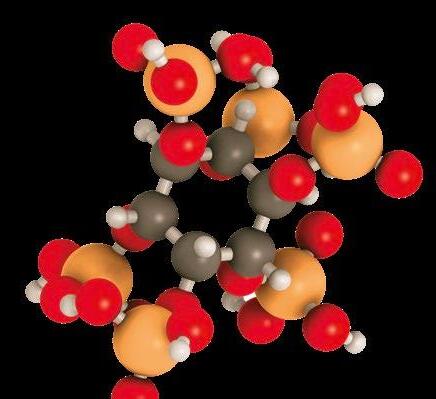


The main site of phytate hydrolysis by supplemented phytases is the stomach, as gastric pH is better suited to the optimal pH of most commercial phytases compared to intestinal pH.
The greatest difference in phytic acid degradation attributable to phytase supplementation is found in the stomach and duodenum, with this difference remaining throughout the small intestine before additional microbial activity in the large intestine.
Exogenous phytases help release P from phytates
The large intestine also contributes to P absorption in pigs 14,15 , since, although to a lesser extent than the small intestine, the expression of phosphate/sodium transporters in the colon suggests significant P absorption in this section. In addition, the large intestine may play an important role in the recycling of endogenous P secreted in the upper gastrointestinal tract.

The duodenum and jejunum are the main sites of P absorption in pigs and other monogastric species, and this occurs thanks to specific phosphate/ sodium transporters in the small intestine, facilitating an active and transcellular process
This absorption is modulated by endocrine factors (vitamin D and triiodothyronine) and nutritional factors, such as dietary minerals and the chemical form of P4.
In piglets, absorption can reach 97% 6,28.

The solubility of P sources influences their absorption, with inorganic P being more easily absorbed than P sources of plant origin.
Net P absorption in the large intestine may depend on the source of carbohydrates in the diet:
Cellulose and pectin are associated with net P secretion.
Starch is associated with net P absorption.
In practical diets, greater P absorption has been observed in the large intestine compared to semi-purified diets5
In rats, P absorption occurs via transcellular (78%) or paracellular (22%) pathways, actively and passively when luminal P concentrations are very high, and this model is presumed to be similar in pigs.
Once absorbed, P travels through the blood associated with phospholipids or as inorganic P, reaching different tissues and, depending on requirements, is retained in the tissues or excreted through milk, feces, or urine , the latter being the main route of elimination. The regulation of P metabolism involves the cooperative interaction of the intestine, bones, and kidneys, parathyroid hormone, calcitriol, and calcitonin18,28
P excretion in pigs is mainly due to the low digestibility of P and the excessive content of digestible P in the diet.

Fecal P consists of:
Undigested portions of P bound to phytate (phytic phosphorus, PP) and NPP from plant sources.
Undigested portions of P from animal by-products and mineral supplements.
The surplus of bioavailable P that exceeds the animal's requirements.
These factors result in significant P excretion in feces31
P excretion in feces is influenced by three main factors:
1 3 2
Unavoidable P losses, which depend on the body weight of the pigs.
Availability of dietary P, related to the origin of P in the diet.
Regulatory excretion of P due to adaptation in absorption and/or endogenous secretion depending on the level of P supply.
Urinary P excretion also depends on the metabolic status of the pig in terms of its P level.
According to Poulsen et al. (1999), fecal P excretion can account for approximately 52% in sows, 46% in weaned piglets, and 55% in growing pigs of total P intake. In general, the growth period contributes up to 75% of total P excretion.
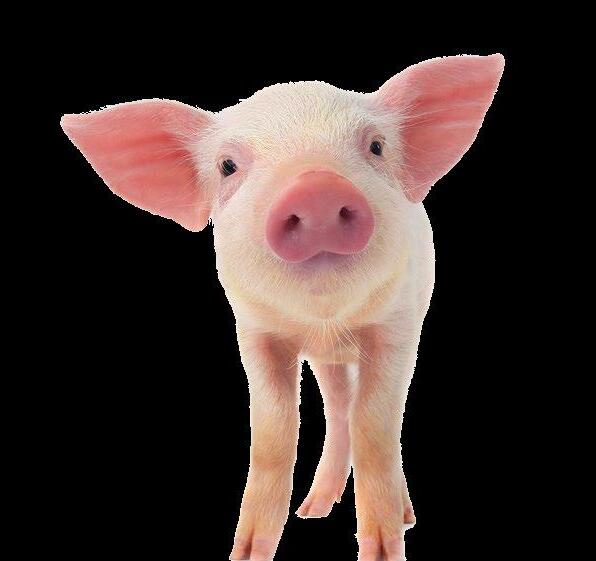
The disposal of manure with high P content raises environmental concerns due to the excess P in manure compared to that required by crops, which can lead to its accumulation in the soil and its eventual movement during erosion and surface water runoff.

Fibroblast growth factor 23 (FGF23): inhibits renal reabsorption of P and suppresses circulating concentrations of calcitriol, thereby reducing intestinal absorption of P and promoting its renal excretion.
P homeostasis is regulated by intestinal absorption, mobilization of P from bones, and renal excretion through various hormonal and metabolic mechanisms: Parathyroid hormone, or parathyrin: secreted by the parathyroid glands, this hormone increases P reabsorption in the renal tubules, its renal excretion, and its mobilization from the bones into the bloodstream.
Klotho: cofactor of FGF23 that enhances its inhibitory effects on renal P reabsorption and calcitriol production.
Vitamin D or calcitriol: stimulates the absorption of P in the small intestine.
It is activated through its conversion in the liver to 25-hydroxycholecalciferol* and then in the kidneys to
*25-hydroxycholecalciferol: the main circulating metabolite of vitamin D3, formed in the liver, acting as a precursor that is converted in the kidneys into the active form of vitamin D3.
**1,25-dihydroxycholecalciferol (calcitriol): the most active metabolite of vitamin D3, produced in the kidneys, increasing P absorption in the small intestine, facilitating the release of P from the bones, and reducing renal excretion of P.

24,25-dihydroxycalciferol, a less active metabolite of vitamin D3, is also produced in the kidneys. Its precise function is not fully understood, but it is considered less efficient in regulating P homeostasis compared to calcitriol.
Bioavailability (available P) is an abstract concept used to describe the extent to which P in a feed is absorbed, metabolized, and utilized by the animal, but it has been used without due caution in many publications27.
It reflects the net effects of digestion, absorption, and post-absorption utilization of P by tissues and organs for maintenance, growth, or reproduction.
To estimate the phosphorus requirements of pigs, the concept of available phosphorus has been widely used and, as mentioned above:
Phytic Phytic P (PP) was considered unavailable.
Non-phytate P (NPP) was considered available to pigs.
Traditionally, available P was determined using the Relative Biological Value (RBV), by evaluating bone strength, bone ash weight, and bone ash percentage in pigs with various sources of P and comparing them with a standard source.
The RBV of a standard source of P assignes a value of 100%, and the bioavailability of P in other raw materials is estimated as a relative percentage ,using the Slope Ratio Method,as described in Petersen et al. (2011).
This method is useful for comparing the bioavailability of different sources of P, but it has disadvantages.
It does not allow for the calculation of digestibility or the amounts of P absorbed, and may overestimate digestibility in certain ingredients such as DDGS.
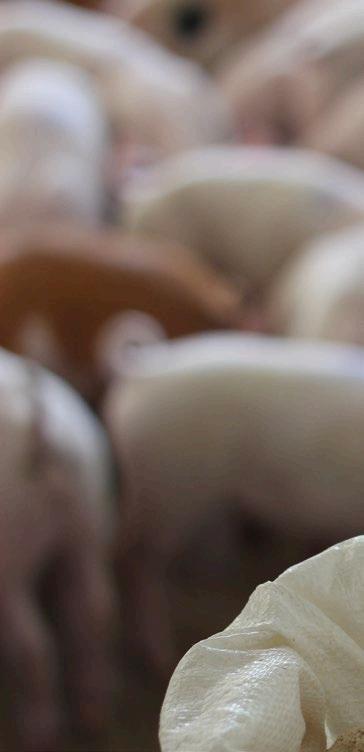

Parameter studied
Figure 3. Description of the SlopeRatioMethod.
The availability of P depends on several factors3,16,19,18:
The variable response chosen for evaluation, such as pig body weight, bone ash, or femur breakage hardness.
The inorganic phosphate chosen as a reference.
The composition of the diet.
The Ca:P ratio, which varies between different raw materials.
Age of the pig or its development (piglet, finisher, or female).
Duration of the trial.
Reference
Source studied
Low phosphorus basal diet
Availability = b/a x 100

Paraphrasing Leske and Coon (2002) when referring to available P when calculated in poultry:
"The biological value (bioavailability of P) only describes the potential for utilization of P in a raw material when compared to a reference standard for P contained in the phosphates used in feed. The actual amount of P retained by the bird per unit of P in the raw material is not determined." .
Today, P requirements are estimated in terms of digestibility, and availability is no longer used.
Digestibility can be estimated using two complementary methods: the factor estimation and empirical estimation that validates the factorial estimation.
The factorial estimation is based on estimating the requirements for:
Maintenance (replacement of inevitable or basal endogenous losses in feces and urine).
Retention of P in the body and in the products of conception.
P excretion in milk.
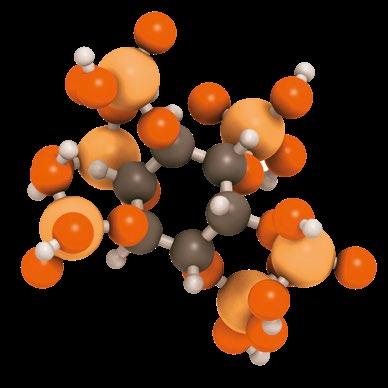
processes.
To estimate maintenance requirements, endogenous P losses must first be calculated , which can be divided into basal and specific losses.
Losses associated with characteristics inherent to the animal's needs, included in nutritional requirements.
These losses are calculated using:
Diets that cause little or no specific P loss, such as semi-synthetic P-free diets or P-free diets.
Techniques such as extrapolation to "zero P intake".
Diets with radioactively labeled P.

Losses associated with dietary fiber, considered a characteristic of feed ingredients that are implicitly accounted for in the digestibility coefficient.
These losses are determined by adding the ingredient under study to a basal diet with a known digestible P content and observing its impact on P digestibility.
In theory, the digestibility of P in an ingredient can be calculated by multiplying its relative bioavailability (RBV) by the digestibility of P in the standard mineral P with which it is compared, although this conversion has been questioned by comparative studies.
To measure P digestibility, several operational decisions:
The use of a marker or the classic quantitative comparison between input and output.
The choice between ileal and fecal sampling.
It has been shown that the large intestine does not play an important role in P digestion and there is no difference in true P digestibility between ileal and total digestive tract levels.
This justifies the determination of fecal P digestibility, characterized by its accuracy and ease of operation.
The term "apparent" in P digestibility (ATTD, Apparent Total Tract Digestibility) refers to the calculation in which both the undigested P from the feed and the endogenous loss from the pig have been deducted from the dietary P supply.
This measure takes into account the phosphorus ingested and the phosphorus excreted in the feces, without differentiating between phosphorus that comes from the feed and phosphorus that is lost endogenously (i.e., phosphorus that the animal excretes naturally, regardless of the phosphorus in the feed).
The secretion or absorption of P in the large intestine cannot be easily integrated into the current digestibility system, and its influence on the precise formulation of diets under practical conditions may be negligible.
P ATTD = [(P ingested – P excreted)/P ingested] x 100
Some studies have found that P ATTD values measured for ingredients are not always additive when used in the formulation of pig diets. For example:
ATTD values for P in corn vary significantly in studies with pigs of different weights1,9,25
In contrast, ATTD of P in monocalcium phosphate does not change with increasing inclusion rate.
ATTD values in soybean meal and rapeseed meal also do not vary with inclusion level19.
The endogenous P loss in pigs represents different proportions of the P supply due to variable inclusion rates of different feed ingredients, which challenges the additivity of apparent P digestibility, a problem that is minimized when using the standardized P digestibility system.
The term "standardized" (STTD, Standardized Total Tract Digestibility) refers to the calculation in which both the undigested P in the feed and the specific endogenous P loss of the pig have been deducted from the P supply in the feed, while the inevitable basal endogenous loss of P is considered a factor in the pig's requirements.
Basal endogenous losses are the unavoidable losses of phosphorus that occur in the digestive tract of the pig, which are not related to the type of feed. They are considered a constant.
STTD is obtained by adjusting apparent digestibility (ATTD) to include only basal endogenous losses, and not total endogenous losses (which would include additional losses specific to the feed type).
STTD of P (%) = [(P ingested – (P excreted –Basal endogenous losses of P))/P ingested] × 100
The NRC 18 calculated the STTD of P for different raw materials using basal endogenous losses of 190 mg/kg of dry matter consumed to correct the ATTD values for P. However, Stein et al. (2011) used a value of 200 mg/kg in their calculations to correct the ATTD values for P.
Almeida and Stein (2010) indirectly demonstrated that the STTD values for P are additive, as they did not observe significant differences between four diets formulated using STTD values for P.
She et al. (2018) demonstrated that the STTD of P in corn, soybean meal, and rapeseed meal is more additive than its ATTD equivalents in pigs.

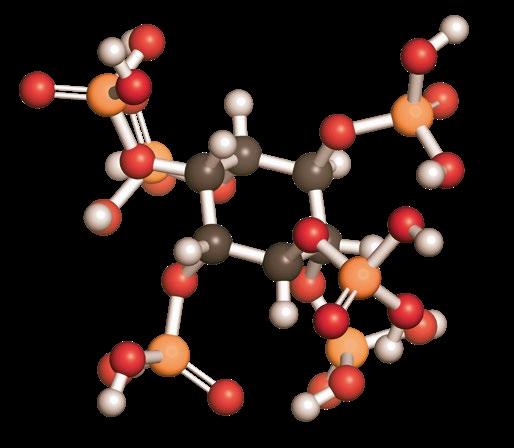

According toNRC18 , the use of P STTD values in practical diet formulation allows for additivity between feed ingredients and more accurate diet formulation compared to the use of P ATTD values
The term "true" in P digestibility (TTTD, True Total Tract Digestibility) refers to the actual ability of a feed to provide P, according to the calculation in which only the undigested P derived from the feed has been deducted from the P supply in the feed.
Different methods have been used to measure true P digestibility:
Fan et al. (2001) determined the specific endogenous loss of P and the true digestibility values of P in plant ingredients using regression analysis and the index method.
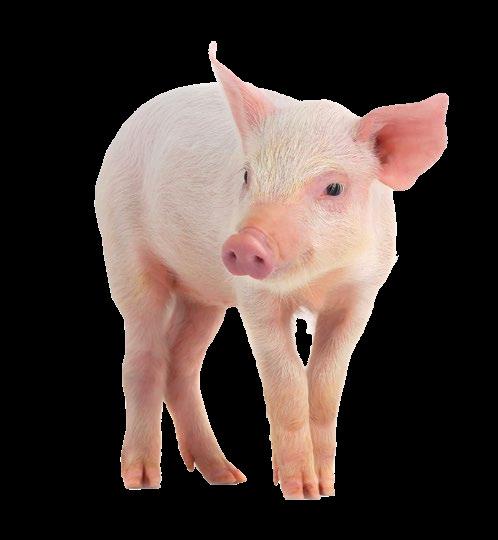
Petersen et al. (2011) estimated specific endogenous P losses and true P digestibility in inorganic P sources based on a P-free diet and, together with other authors, tested the additivity of TTTD values of P in different plant raw materials.

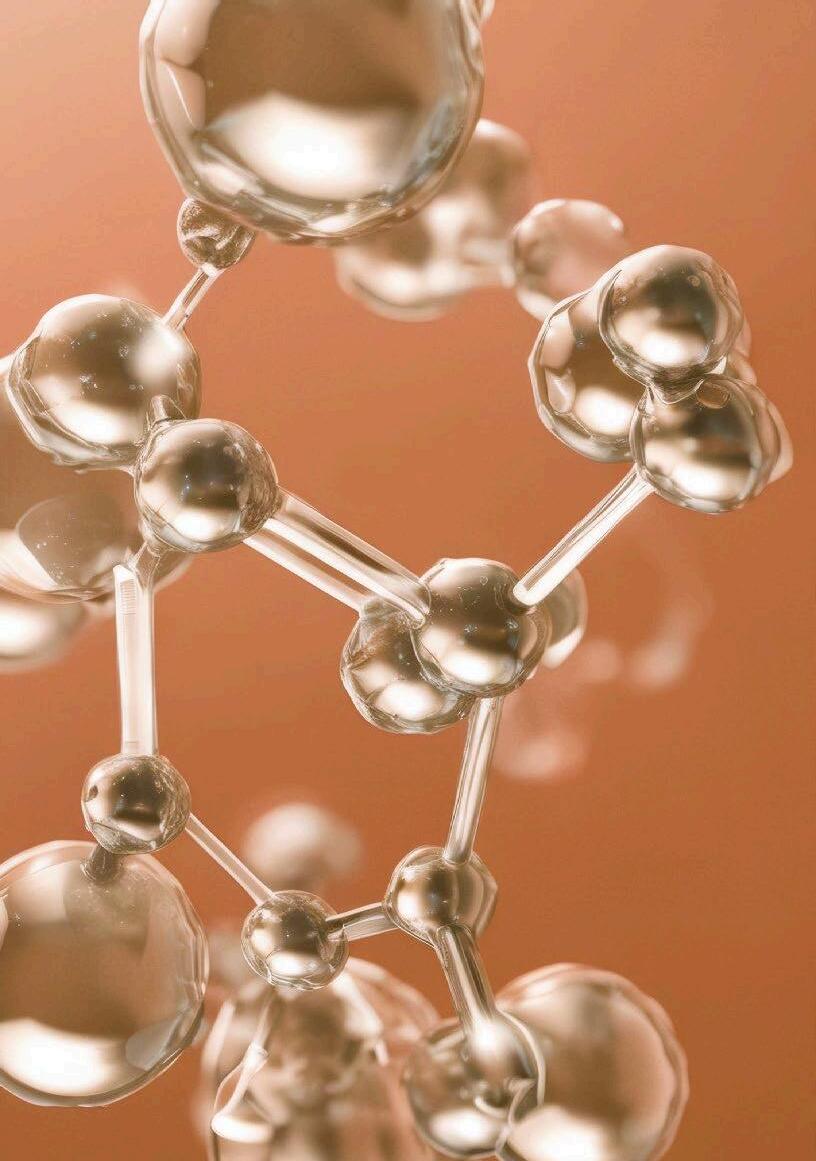
The main challenge of TTTD is the difficulty of measuring the specific endogenous loss of P associated with each ingredient and considering it as part of the pig's requirements.
In contrast, the STTD system, which corrects apparent digestible P for basal endogenous loss, appears to be the most practical option.
These methodologies estimate requirements, but not pig responses, such as transient deficiencies or compensatory retention that occur in practice.

The precise amount of P in the diet of a pig depends on the interaction between production objectives (profitability, animal welfare, and environmental protection) and response criteria (daily growth, P excretion to the environment, or bone mineralization).
Therefore, multi-objective maximization or minimization techniques require complex mechanistic mathematical models, such as the one presented in Lautrou et al. (2020 and 2021).
In conclusion, phosphorus is essential for the metabolism and health of pigs, playing crucial roles in bone growth, protein synthesis, and enzyme activity.
Proper phosphorus management in feed is vital to avoid deficiencies or excesses, which can affect productivity and the environment.
Understanding the concepts of phosphorus availability and digestibility is essential for formulating effective and sustainable diets, optimizing the absorption of this mineral and improving feed efficiency through the use of phytases and the selection of appropriate ingredients.



Zootechnical
Non-hygroscopic



C/San Romualdo 12-14, Oficina 3º- 1 28039 Madrid (Spain)
com
M. Naeem and A. Fatima Department of Poultry Science, Auburn University, USA
Protein is one of the most critical nutrients in poultry diets, influencing growth, development, reproduction, and overall health. Traditionally, poultry diets have been formulated with high protein content to maximize production performance.
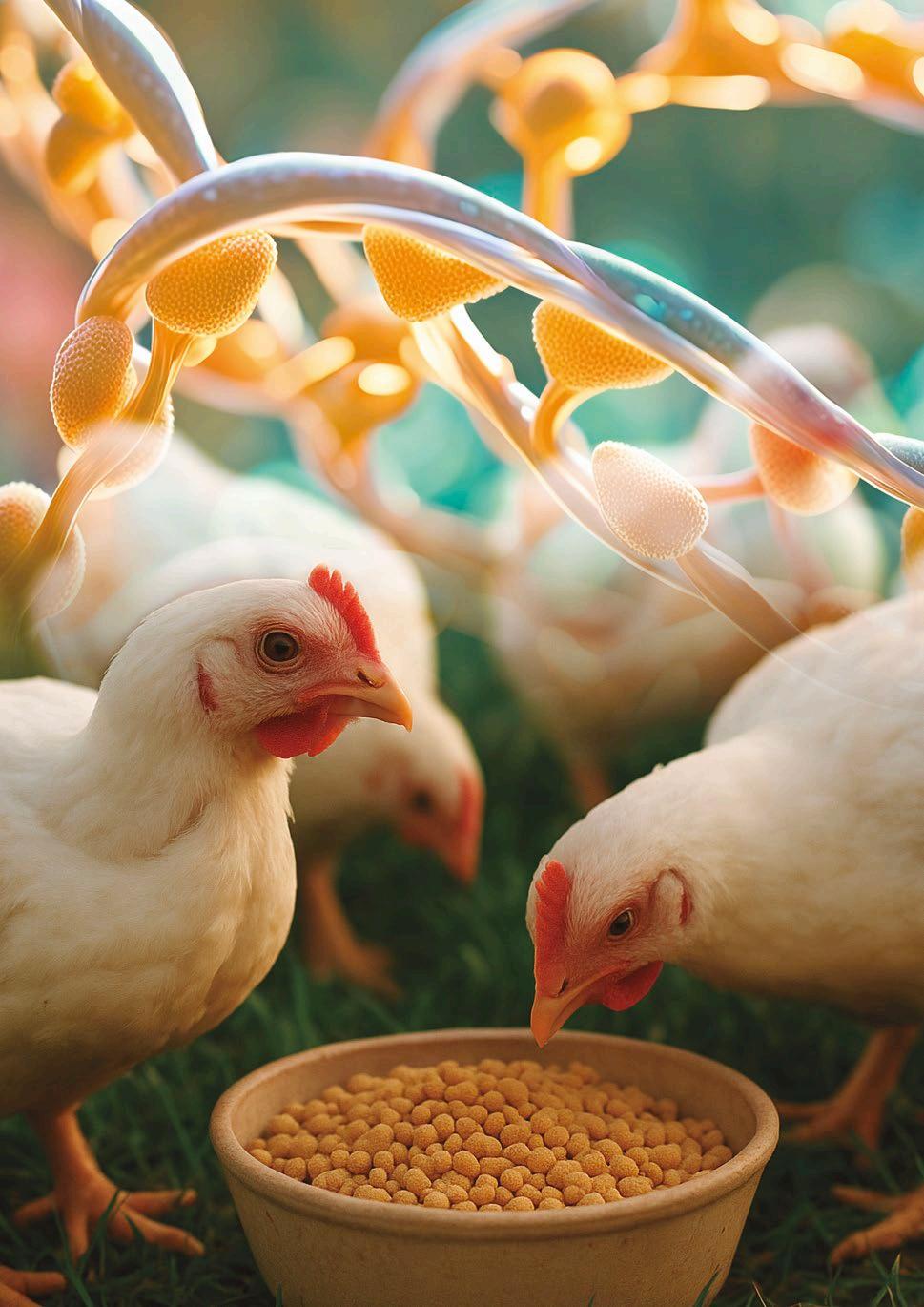
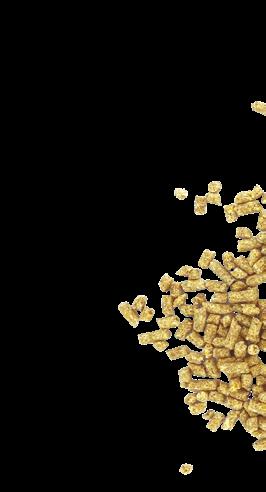
However, increasing awareness of economic, environmental, and physiological considerations has led to a growing interest in low-protein diets (LPDs) as an alternative strategy.
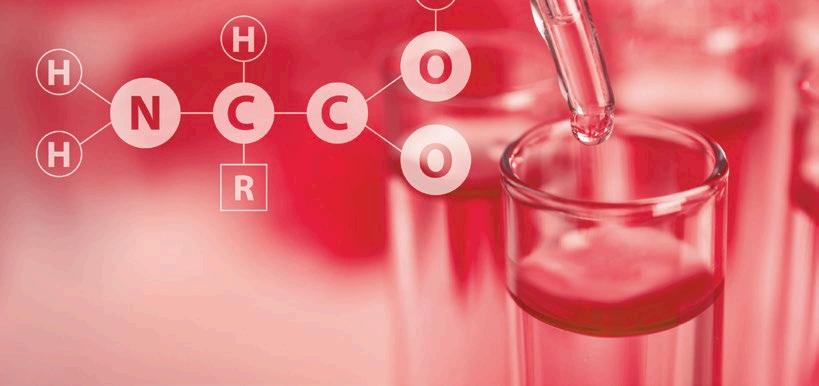
Contrary to the perception that high protein intake is essential for optimal productivity, recent studies show that LPDs, when supplemented with essential amino acids, can maintain performance while offering significant benefits.
This article discusses the importance of lowprotein diets in poultry, covering nutritional principles, physiological responses, economic implications, environmental impacts, and future perspectives.
Poultry, including broilers, layers, and breeders, require a balanced diet to support their physiological functions. Protein plays a key role in muscle development, enzyme and hormone synthesis, immune function, and feathering.
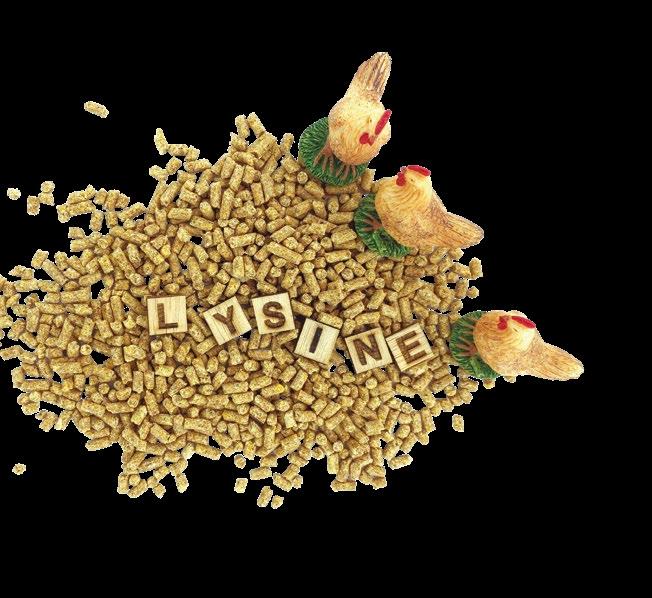
However, birds do not have a specific requirement for crude protein; instead, they require essential amino acids such as lysine, methionine, threonine, tryptophan, and valine, which are the building blocks of protein.
Traditionally, diets have been formulated based on crude protein levels, often including soybean meal and fish meal.
This approach, while effective for growth, can lead to excess nitrogen excretion, increased feed costs, and environmental pollution.
By focusing on the amino acid composition rather than crude protein percentage, nutritionists can formulate LPDs that meet the birds’ needs more precisely and efficiently.
One of the main advantages of LPDs is the increased efficiency of nutrient utilization. High protein diets often provide more protein than required, leading to catabolism of excess amino acids and subsequent nitrogen excretion.
This not only wastes nutrients but also imposes a metabolic burden on the bird’s liver and kidneys.

Feed accounts for 60–70% of the total cost in poultry production, with protein ingredients being among the most expensive.
By reducing crude protein and supplementing with synthetic amino acids to meet specific needs, LPDs promote better utilization of dietary nitrogen.
Studies have shown that birds on wellbalanced LPDs exhibit similar growth rates, feed conversion ratios (FCR), and carcass yields compared to birds on standard or high-protein diets.
The reduction in metabolic waste also supports better health and reduces the incidence of metabolic disorders like ascites and gout.
Reducing the crude protein content in poultry diets directly lowers feed costs by decreasing the reliance on highcost protein sources.
The use of crystalline amino acids, such as DL-methionine and L-lysine, has become increasingly cost-effective and allows for precise formulation of LPDs. As a result, producers can achieve the same or better production performance at a lower cost.
Moreover, LPDs reduce the risk of overfeeding nutrients that do not contribute to performance, making the operation more economically sustainable.

One of the most compelling reasons to adopt LPDs in poultry nutrition is the environmental benefit. Excess dietary protein not utilized by birds is excreted as nitrogen in the form of uric acid, contributing to ammonia emissions in poultry houses and nitrogen pollution in the environment.

LPDs significantly reduce nitrogen excretion and ammonia volatilization. Research shows that each 1% reduction in dietary protein can decrease nitrogen excretion by approximately 10%, improving both environmental sustainability and farm hygiene.
Ammonia emissions negatively impact air quality in poultry houses, leading to poor bird welfare, increased susceptibility to respiratory diseases, and reduced worker health. Additionally, nitrogen runoff from poultry litter can pollute water bodies, leading to eutrophication, algal blooms, and damage to aquatic ecosystems.
High protein intake, particularly when imbalanced with energy or amino acids, predispose poultry to various metabolic disorders.
Excess protein metabolism leads to increased production of uric acid, placing stress on the kidneys and liver.

LPDs mitigate these risks by aligning nutrient intake with actual physiological requirements.
In broilers, excessive protein may contribute to ascites syndrome (fluid accumulation in the abdomen), which is associated with high oxygen demand and poor cardiovascular efficiency. In layers, high protein intake may lead to impaired egg quality and reproductive inefficiency.
Birds on optimized LPDs often show improved gut health, reduced incidence of metabolic disorders, and enhanced immune responses due to the lowered metabolic load and improved nutrient balance.
A common concern among poultry producers is the impact of LPDs on carcass quality and meat composition.
High-protein diets are traditionally associated with rapid muscle growth and higher breast meat yield.
However, recent research suggests that LPDs, when adequately balanced, do not compromise carcass yield or muscle deposition.
In fact, LPDs may improve meat quality by reducing fat deposition, improving meat texture, and enhancing nutrient composition.
Lower protein levels reduce the risk of excessive protein turnover and oxidative stress, leading to better water-holding capacity and reduced drip loss in meat products.
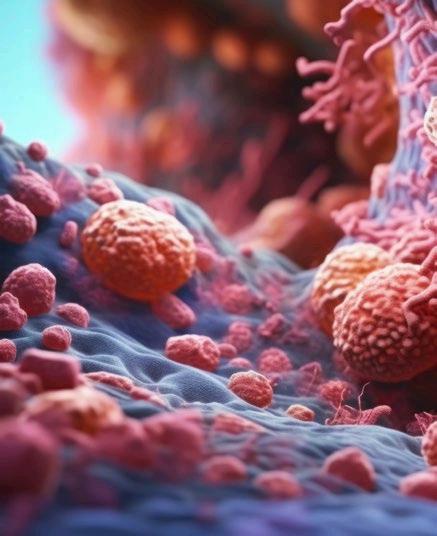
While the advantages of LPDs are significant, their successful implementation requires careful formulation and management. Some of the key challenges include:
Accurate amino acid profiling: It is essential to know the digestible amino acid content of all ingredients and match them precisely with the bird’s requirements.
Use of synthetic amino acids: Availability and cost of amino acid supplements can affect the feasibility of LPDs, especially in regions with limited supply chains.
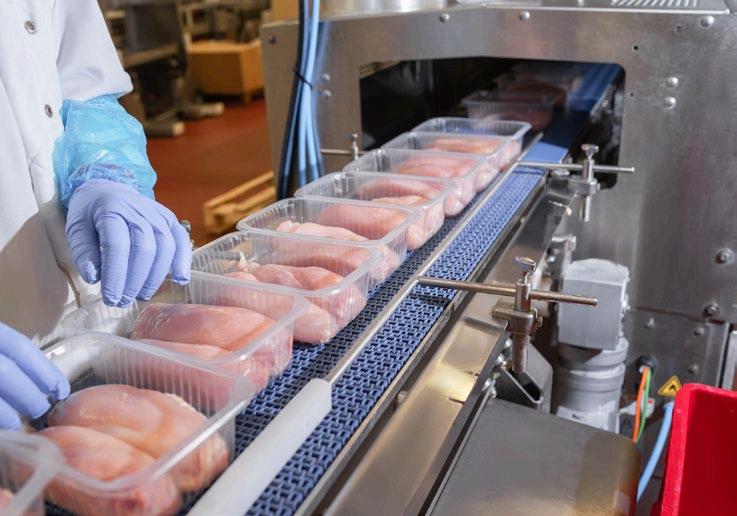
Breed and production stage: Nutrient requirements vary by species, breed, age, and production purpose (meat vs. eggs).
LPDs must be tailored accordingly.
Health and gut microbiota: Lower protein levels can influence gut microbiota composition. A balanced approach with adequate fiber and probiotics may help support gut health.
Proper feed formulation software, laboratory support, and training of nutritionists are critical for the effective implementation of LPDs in commercial settings.

Countries with advanced poultry industries, such as the Netherlands, the USA, and Brazil, are increasingly adopting LPD strategies.

Ongoing research continues to refine the use of LPDs. Some promising directions include:
Ideal protein concept: This approach aims to supply amino acids in the exact proportions required for protein synthesis, minimizing excess.
Gut health optimization: The use of enzymes, prebiotics, and probiotics can enhance nutrient digestibility, allowing further reductions in crude protein.
Phase feeding: Adjusting protein levels in stages according to bird growth improves nutrient efficiency.
Insect and microbial protein sources: These emerging protein sources offer more balanced amino acid profiles and lower environmental footprints, supporting LPD formulations.
In Brazil, for example, studies have shown that broilers can be successfully reared on diets with 2–3% lower protein than traditional levels, supplemented with synthetic amino acids, without compromising productivity.
In the EU, environmental regulations such as the Nitrates Directive have encouraged producers to reduce nitrogen output. LPDs have emerged as an effective tool to meet regulatory requirements while maintaining profitability.
Asian countries, facing growing demand for poultry meat and pressure on feed resources, are also exploring LPDs to improve sustainability.
As the global demand for poultry meat and eggs continues to rise, sustainable production practices will be critical.
Low protein diets, integrated with precision feeding technologies and amino acid supplementation, offer a pathway toward more environmentally friendly and economically viable poultry production.
Future developments in genetic selection, feed ingredient technology, and digital monitoring tools will likely further enhance the efficacy of LPDs. Integrating LPDs with circular agriculture principles, such as utilizing food industry byproducts and alternative proteins, will contribute to a more resilient food system.
Low protein diets in poultry nutrition represent a paradigm shift from crude protein-centric approaches to precision amino acid-based formulation.
The importance of LPDs lies in their ability to sustain production performance while reducing feed costs, improving bird health, minimizing environmental impacts, and enhancing meat quality.
While challenges remain in formulation, implementation, and ingredient availability, the benefits of LPDs make them an essential tool for modern poultry production.
As the poultry industry moves toward greater sustainability and efficiency, low-protein diets will undoubtedly play a pivotal role in shaping the future of animal agriculture.
The Importance of
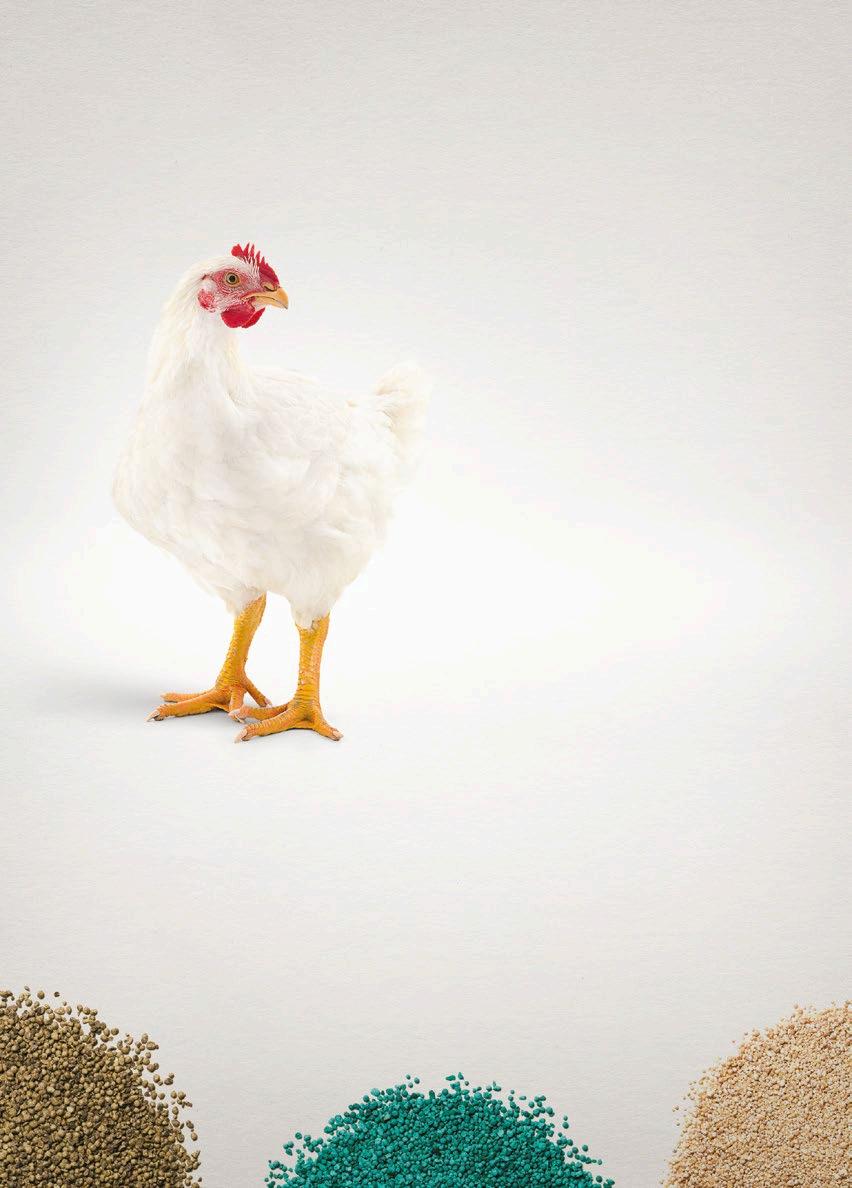
novusint.com/ poultryminerals ONLY MINTREX® BIS-CHELATED TRACE MINERALS DELIVER THE PROACTIVE ABSORPTION YOU NEED TO MAXIMIZE NUTRITION.
Our authentic organic trace minerals are the only minerals proven to survive the digestive tract and reach the absorption site for greater tissue enrichment. With superior mineral bioavailability, MINTREX® bis-chelated trace minerals help reduce mortality and optimize growth for broilers with enhanced structural integrity to stay healthier and deliver stronger performance from start to finish. ® and MINTREX are
High temperatures negatively affect the performance and economic results of commercial poultry farms.
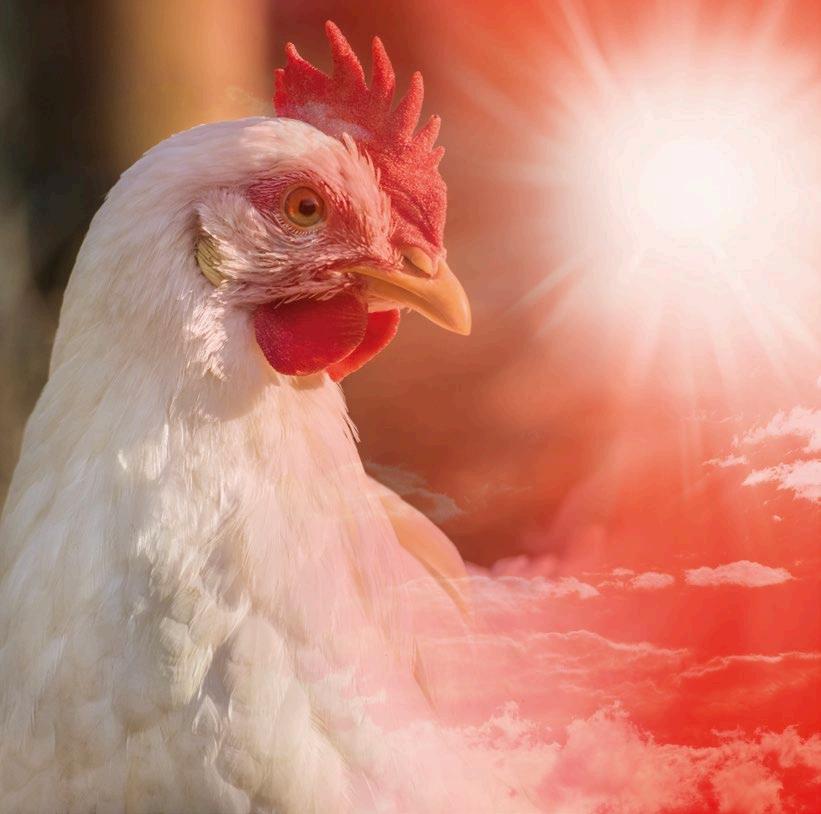
Heat stress impacts gut health by impairing the intestinal barrier function, as well as increasing intestinal permeability and inflammation, altering the microbiota composition, reducing nutrient absorption, growth and performance of birds, and increasing susceptibility to infections such as those caused by Salmonella and necrotic enteritis.
During heat stress, there is reduced blood flow to the intestine, which causes oxidative stress and compromises the integrity of the intestinal mucosa. Furthermore, heat stress suppresses the immune system, including the gutassociated lymphoid tissue (GALT), making birds more vulnerable to infections.
These cumulative effects lead to a reduction in performance indicators such as body weight gain, egg production, and hatchability.

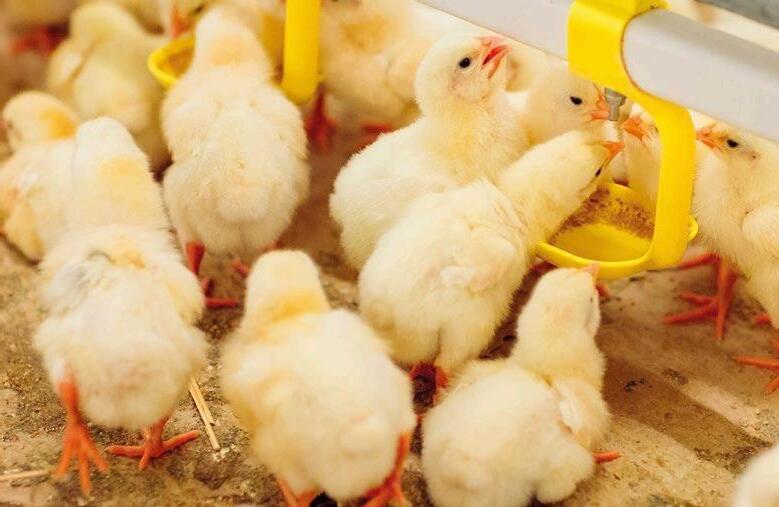
Water is the most critical nutrient for birds. It plays a fundamental role in digestion, nutrient transport, regulation of body temperature, and waste elimination, which impacts both health and productivity.
The supply of quality water –with optimal pH values and total dissolved solids (TDS), as well as a low microbial count – is essential for animal health and performance.
An effective energy balance is necessary to compensate for the lower feed intake during periods of heat stress. Use raw materials with low caloric increment, such as vegetable oils and digestible cereals.
Additionally, ensure an adequate ratio between metabolizable energy and digestible lysine to achieve optimal bird growth and avoid excessive fat deposition.
To improve gut health and prevent dysbiosis, it is important to include highly digestible protein sources in the diet and ensure a balanced intake of digestible amino acids, in addition to reducing caloric increment and the presence of undigested protein in the large intestine.
Under conditions of high temperature and humidity, it is recommended to reduce crude protein levels by 0.5-1.0% and increase digestible amino acid levels by 3-5%.
A balanced supply of cations (positively charged ions – Na+ and K+) and anions (negatively charged ions – Cl-) is necessary for the birds' acid-base balance (DEB) to be achieved.
Under high temperature conditions, it is essential to have an effective DEB (≥240 mEq/kg) to ensure better performance and osmotic balance of the animals.
It is known that high levels of sodium (Na) in the diet promote greater bird growth; however, if this increase occurs through salts (NaCl), there may be higher litter moisture. In addition, potassium (K) is beneficial for birds in situations of heat stress.
Therefore, sodium bicarbonate and potassium carbonate are the best options to maintain an adequate DEB.
Excessive panting under high temperature conditions leads to respiratory alkalosis, which impairs the system's acid-base balance. Therefore, DEB and the choice of appropriate salts are important aspects in poultry diets.
DCAD Plus™ is a stable, feed-grade form of potassium carbonate produced by Arm & Hammer Animal Nutrition that can be used in animal feeds to maintain electrolyte balance.
Minimize the levels of chloride (Cl) and sulfate (SO4) in the diet.
First, optimize the Na concentration in the feed. Together with a minimum salt content, use NaHCO3 (it is better than Na in chloride or sulfate forms) to optimize DEB. Next, increase/ balance potassium (K) levels in the diet to meet the DEB deficit.
Choose K sources free of chloride or sulfate. Stable potassium carbonate (DCAD Plus™) is the best choice to effectively increase DEB values.
1. Some commonly used electrolytes and DEB values
*DEB values calculated by molecular weight divided by 1000
The supplementation of additives such as enzymes, emulsifiers, and bile acids promotes greater nutrient digestibility. It is recommended to increase the levels of minerals and vitamins (5-15%) in the feed, at levels above the standard.
The inclusion of an effective toxin adsorbent such as BG-MAX™ from Arm & Hammer Animal Nutrition in the diet is essential to neutralize mycotoxins, their negative impact on birds during periods of stress, and also to protect the cells.
CELMANAX™, from Arm & Hammer
Animal Nutrition, is a postbiotic that contains highly bioavailable Refined Functional Carbohydrates (RFCs™), a proprietary technology of Arm & Hammer.
CELMANAX™ is a multicomponent product developed to maintain the intestinal health and balance of animals. It promotes the growth of beneficial bacteria and helps maintain a healthy intestinal environment, as well as supporting the immune system.
The use of higher levels of antioxidants (vitamin C) in the feed, as well as betaine, butyric acid, essential oils, and intestinal acidifiers, promotes greater bird performance.
Beneficial probiotic strains, such as CERTILLUS™ from Arm & Hammer
Animal Nutrition, improve gut health and establish a balanced microbiota in the gastrointestinal tract.

Customized and specific microbial solutions such as CERTILLUS™ act effectively against avian pathogenic E. coli and Clostridium perfringens, while combinations of specialized strains support gut health and nutrient digestibility.
It is recommended to use crumbled and pelleted feeds for chicks and broilers during the summer. In the case of mash feeds provided to laying hens and broiler breeders, the percentage of dust should be minimized and an adequate particle distribution ensured.
Furthermore, the feed moisture percentage should be kept at ≥11.0% for consumption.
Thermal stress control is a holistic approach. Just as managing the farm and poultry houses, it is essential to provide a balanced diet.
The balance of the diet regarding energy, digestible amino acids, electrolytes, minerals, and vitamins, as well as the inclusion of scientifically proven additives, are fundamental to combat the effects of heat stress in birds.
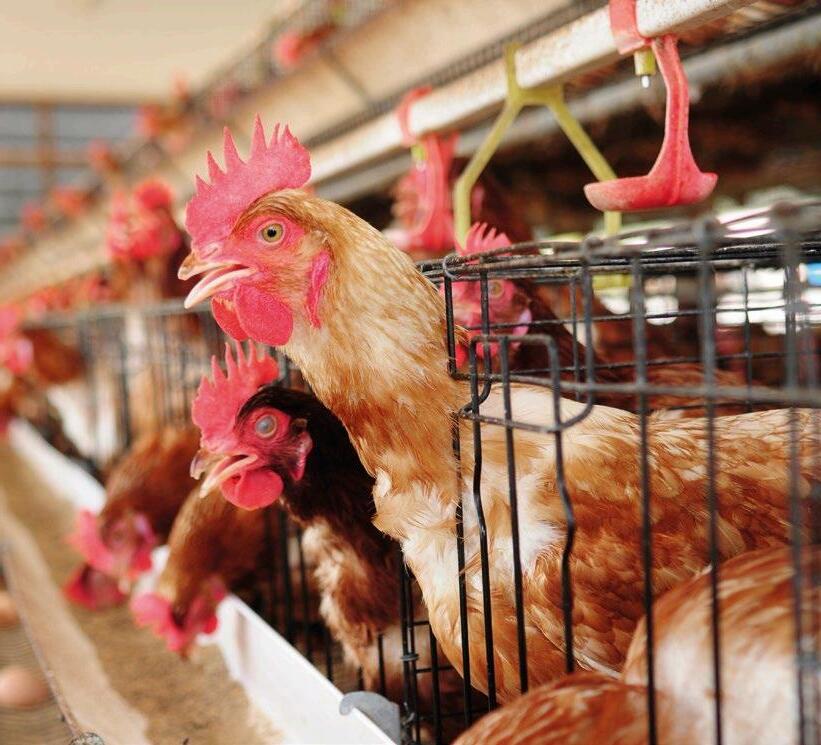
To learn more about how to optimize bird performance, visit ahanimalnutrition.com.
Practical nutritional tips to control heat stress and maintain poultry performance DOWNLOAD ON PDF

Creep feeding has long been recognized as a strategic tool for livestock management. It involves providing supplemental feed to calves while they are still receiving milk from their dams.


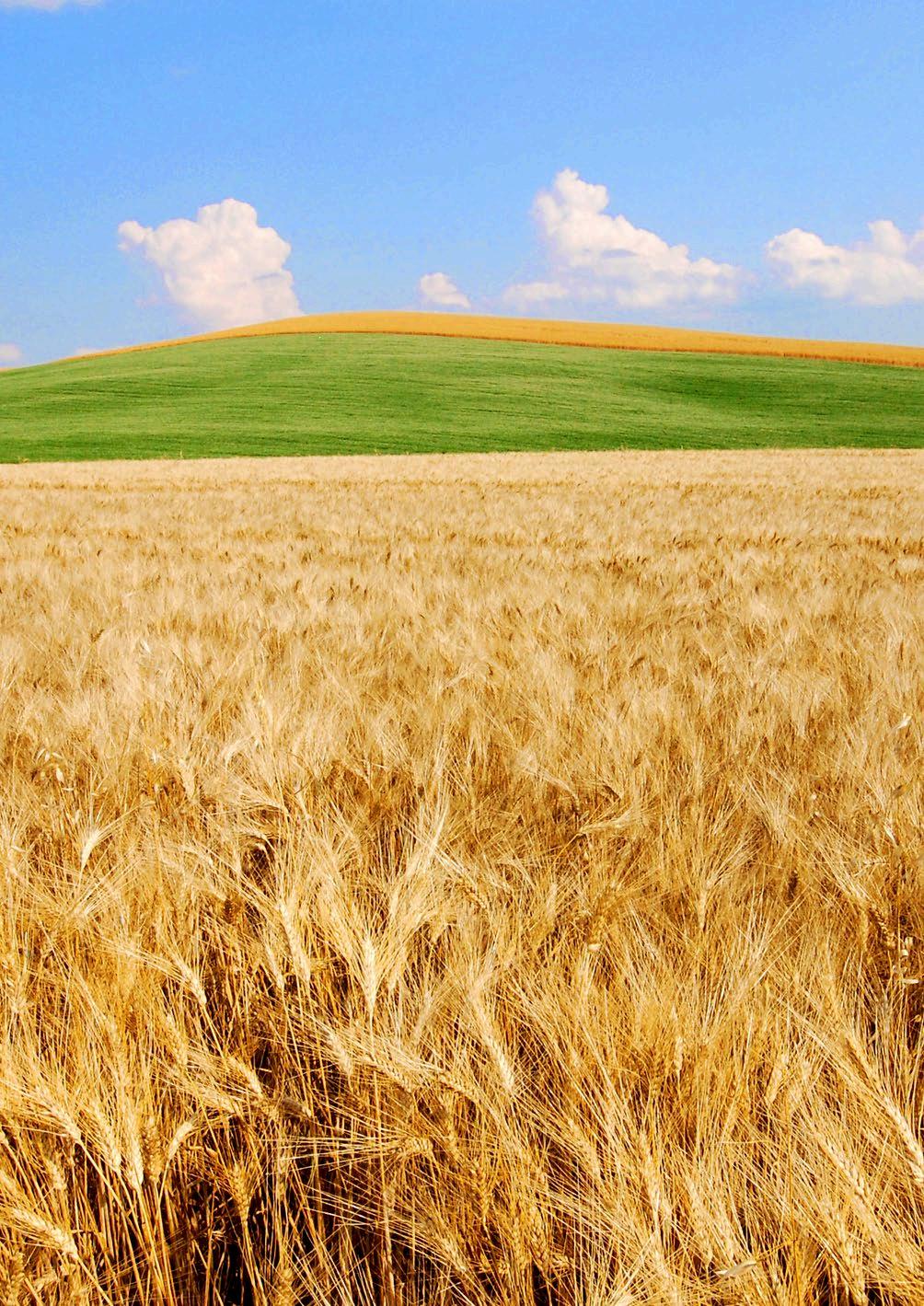

This practice aims to enhance the growth, health and overall development of the young calves, ultimately contributing to the profitability of beef production operations. Creep feeding can also be used successfully for lambs and goat kids.
More Growth: Providing a supplemental feed ensures that the nutritional requirements of the rapidly growing calves are adequately met, leading to increased weight gains. This can result in heavier calves at weaning, translating to higher sale weights and potentially improved market prices.


1 2 3 4
Uniformity: Creep feeding encourages more uniform growth among the calf crop. Calves that have access to supplemental feed tend to exhibit less variation in weight compared to those relying solely on maternal milk. This uniformity can simplify management practices, such as grouping animals for marketing or implementing health protocols.
Weaning Stress Mitigation: Getting

When a producer starts creep feeding can vary depending on factors such as the nutritional requirements of the calves, the availability of forage and the management of the herd.
Calves are often started on creep feed when they are between 2 and 4 months old, after the rumen has developed enough to be capable of assisting in the breakdown of the feed. For best results, creep feeding should continue until weaning.
Closely overseeing the nutritional needs of the calves and adjusting the creep feeding program accordingly to ensure optimal growth and performance while minimizing costs and waste is important.
Before starting a creep feeding program, producers should weigh the cost versus the benefit. The benefit is primarily driven by the cattle market and current feed and calf prices. In a year like 2024, when calf prices are quite good, creep feeding can offer an excellent return on investment.
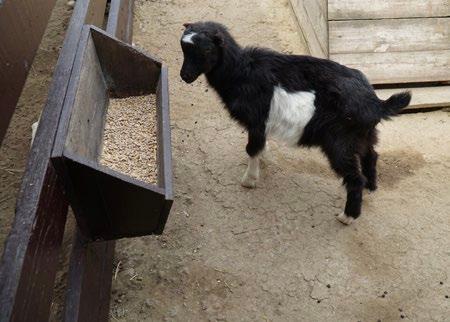
Producers can maximize the benefits of creep feeding by using a research-proven prebiotic like AO-Biotics® Amaferm®. This Anything but Ordinary feed additive enhances digestibility by stimulating the bacteria and fungi in the rumen.
While the benefits of Amaferm® are well documented despite the age of the animal, it’s mode of action is exceptionally well suited for young calves whose rumen development is still underway.
Creep feeding cattle is a valuable management tool that can contribute to the success and profitability of beef production operations.
By providing supplemental feed to nursing calves, producers can enhance growth, improve uniformity and mitigate weaning stress, ultimately optimizing the performance of their herd.

To learn more about including AO-Biotics Amaferm in your creep feed ration, visit www.aobiotics.com.




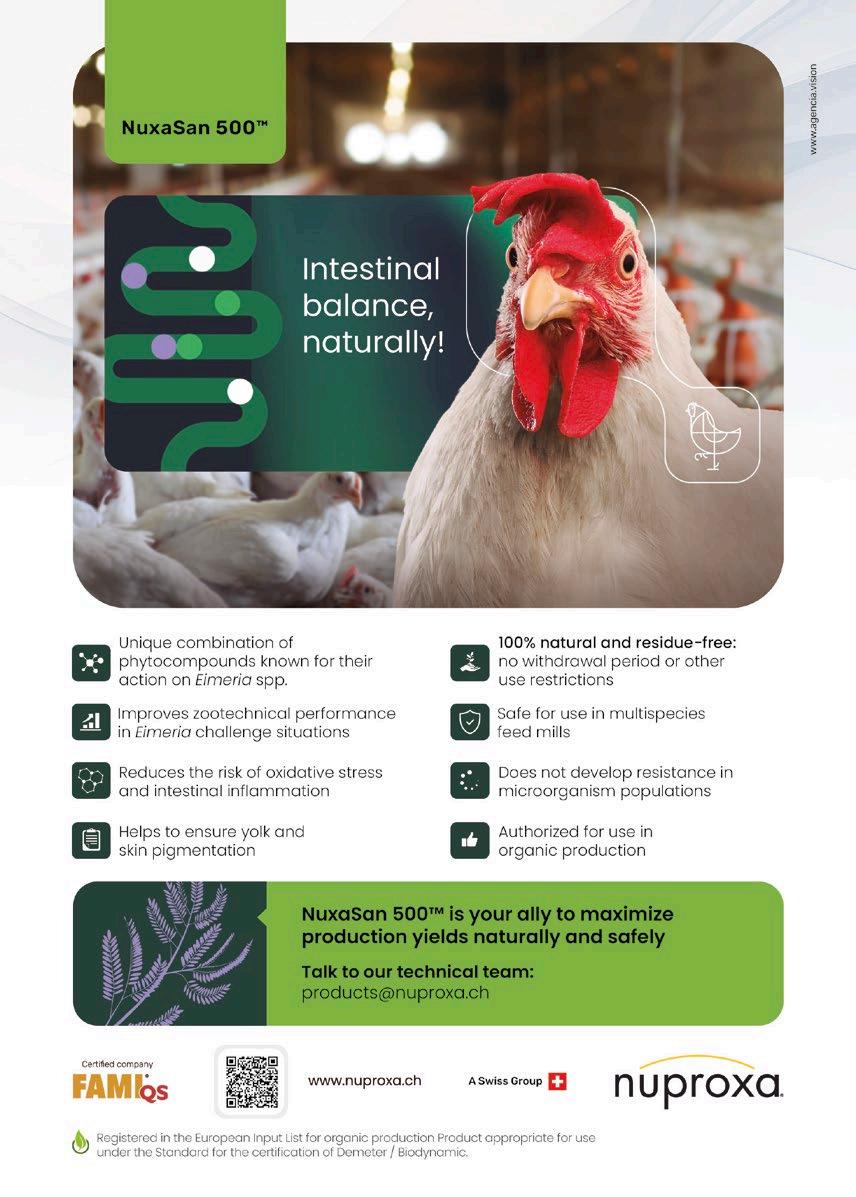

Sol C¹, Villalobos G¹, Horta F¹, Lee J 2 and Kim W K 2
¹ Nuproxa Switzerland, Vaud, Switzerland.
2 Department of Poultry Science, University of Georgia, Athens, GA, USA. felipe.horta@nuproxa.ch
INTRODUCTION
Growing concerns regarding the use of drugs, synthetic additives, and antimicrobial resistance in poultry production have increased the interest in phytogenic supplements. This study was conducted to investigate the effects of supplementation with a polyherbal product based on Acacia concinna between other plants (NuxaSan 500™, Nuproxa, Switzerland) on performance, intestinal health status, and infection level in broiler chickens challenged with Eimeria spp
MATERIALS AND METHODS
A total of 288 one-day-old male Cobb 500 broilers were randomly allocated to 3 treatments, with 8 replicates per treatment and 12 birds per cage, for 28 days.
Treatments were:
Negative Control, NC (basal diet, unchallenged),
Positive Control, PC (basal diet challenged with Eimeria spp.), and PC + 500 ppm NuxaSan 500™ (NS).
Birds from PC and NS groups were orally inoculated on day 14 with 62,500 oocysts of E. acervulina, 12,500 oocysts of E. maxima, and 12,500 oocysts of E. tenella.
The NC group received the same volume of PBS orally.
Data were analyzed using JMP 16.0 (SAS Institute Inc., Cary, NC).
Treatment means were separated using Tukey’s HSD test. Lesion scores were analyzed using Pearson’s Chi-square test to identify significant differences among treatments. Statistical significance was considered at P<0.05, with highly significant results indicated at P<0.001.
Performance data showed that by day 28 birds in the NS group had: the highest body weight (1648a, 1495b, and 1704a grams for NC, PC, and NS, respectively, P=0.0002), better feed conversion ratio (1.40b, 1.45a, and 1.39b for NC, PC, and NS, respectively, P=0.0014), and the lowest mortality (1.04%, 2.08%, and 0.00%, respectively).
The NS group showed a significant reduction (P<0.05) in oocyst shedding of:
E. tenella at 6-7-8-9 days post-inoculation (DPI), E. maxima at 7 and 9 DPI, and E. acervulina at 6 DPI (P=0.055).
Moreover, NS supplementation significantly reduced (P<0.0001) severe lesion scores in the duodenum (0.00c, 2.63ª, 2.00b) and ceca (0.00c, 2.13ª, 1.38b) for NC, PC, and NS, respectively.
Regarding gene expression, Eimeria spp challenge increased (P<0.05) jejunal expression of: claudin 1 (CLDN-1) and pro-inflammatory cytokines: IL-1β, IL-6, TNF-α, and IFN-γ in the PC group; in contrast, NS group showed reduced (P<0.0001) gene expression of CLDN-1, IL-1β, and TNF-α in the jejunum and numerically increased levels of the antioxidant enzyme glutathione peroxidase (GPX) compared to PC.
CONCLUSIONS
Supplementation with 500 ppm of the herbal product mitigated the negative effects caused by Eimeria spp. challenge.
IMPLICATIONS
The herbal product may be an effective dietary tool to improve performance and intestinal health in broilers under Eimeria spp. challenge.

Effect of NuxaSan 500TM on performance and intestinal health in broilers challenged with Eimeria spp. DOWNLOAD ON PDF





